#I think this is from the Batman novel Fear Itself
Explore tagged Tumblr posts
Text
"Fear, you must understand, is more than an obstacle. Fear is a teacher, the first one you ever had. It’s hard-wired into our brains, part of our chemical make-up like the sensation of pain and the urge to procreate. It is foolish to dismiss fear as a mere emotion, or, worse yet, as an uncontrolled and transitory reflex. Fear is a religion. Not the one we preach – the one about the Golden Rule – but the one we live, day-to-day, dollar-to-dollar. The unspoken conviction that there’s not enough of anything in this world, and that no one’s got your back. The utter moral certainty that you’ve got no choice but to watch out for numero uno, because it’s a dog-eat-dog world out there, and only the fittest survive. Fear of starvation is what first prompted you to smile at your mother. Fear of social ostracism is what first made you desperate to please your father. Humans are gregarious, group-orientated animals by nature. Instinctively, we know that we cannot survive on our own. More than anything, we fear isolation and social exclusion. Fear of failure, you see, is fear of social embarrassment – you might get laughed at. But fear of success is fear of social ascendancy – you might be perceived as a threat and expelled from your group. None of this is conscious, of course. We don’t wake up thinking about these things, or discuss them at dinner parties. But we know the fear in our guts, all of us. And, oh, how these times embrace it! Today our government feeds us on fear. It’s our national diet. Cereal and a spoonful of fear! Beer and a fear chaser! Hamburger with an order of super sized fear on the side! And really, why shouldn’t we be afraid? In case you haven’t heard, life is terminal. Cigarettes will kill you. So will your cell phone. Your microwave, the power lines, the squirming germs that raw meat leaves behind on your kitchen counter and the chemical cleansers you neutralize them with... All potentially lethal. Your car is a deadly weapon, alcohol a quiet killer. Too much fat, too much sugar, too much exercise or not enough... Don’t lick the lead-based paint on your windowsills, don’t lick the back of that postage stamp, and don’t lick any strangers, oh, that can take you down quickly, indeed! Don’t drink the water and don’t drink less than eight glasses a day. Hold your breath in traffic, off-gas your furniture, stock up on duct-tape! Don’t talk to strangers, and if you’re female, don’t go home – you’re more likely to be a victim of domestic violence than of burglary, mugging, or any other type of physical assault combined. Your environment is toxic, your natural resources are dwindling, your days are numbered, but whatever you do, don’t panic! The stress, don’t you know, will kill ya.” – Professor Jonathan Crane AKA Scarecrow.
#Batman#I think this is from the Batman novel Fear Itself#but it might of been a different Batman novel#I love it regardless#it's still true
0 notes
Text
So, I just finished Batman Fear State Saga.
I'll do a proper write up later, but off the top of my head:
-The broad plot is fine, but the story itself is lacking. Key exposition is missing (I presume told before the graphic novel starts? or in other novels?) and the resolution doesn't feel earned.
-There is some fantastic character interaction. I'd say it's worth reading for that alone.
-The bat family is repeatedly shown, but they don't actually do much on page. There's just group shot after group shot. They don't even get proper introductions. If they're not relevant to the actual story, I'm fine with leaving them out.
-Love all the female characters. And they interact with each other! After so many graphic novels from the '80s with barely any female characters, this is a very nice change.
-I love Scarecrow in this story. Awful gremlin of a man causing problems on purpose and having the time of his life doing so. He's the best part of the story.
-Batman's a bit off to me. He gives several off the cuff speeches that feel very metaish. I greatly prefer this to distant, cold batman with zero self-awareness, but it doesn't feel authentic. I think those could use a rewrite.
1 note
·
View note
Text
Reasons I Think Gotham Knights Started Out as an Arkham Knight Sequel at Some Point
It clearly isn't an Arkhamverse game. For one, the tone is that of a contemporary Young Adult novel...or a CW show, like one maybe called Gotham Knights. The Arkhamverse is BTAS with a higher rating. But there's a lot of reason to think the concept started out as a sequel to Arkham Knight game somewhere.
I'm not watching any of the marketing stuff about this because games marketing is full of it and cannot be trusted. This is stuff about the game itself. Spoilers ahead.
I'll get to the list, but I'll start by pointing out that the Batfam is niche while Batman has much broader recognition and, yes, appeal (not the 'brainwash son with fear toxin for his own good' comics Batman, I mean the movie, cartoon, and game Batman). Triple-A titles are very expensive endeavors and there is no reason to pour that cash into a title about a niche set of side characters instead of the very popular main character...unless that title is a part of a very successful and popular game series. We know that Suicide Squad Kill the Justice League is only part of the Arkhamverse as a marketing tactic, the same reason all the characterizations line up more with the Suicide Squad movies than with the Arkham ones. Selling the Gotham Knights concept as a follow-on to the Arkham games was probably a viable way to get the project off the ground. What happened from there? I have guesses and I'll get to them.
After that, there is:
The cast. We've got Dick, Jason, Tim, and Barbara. That's the Batfam from the end of Arkham Knight, but not the Batfam that makes the most sense necessarily; Orphan instead of one of the boys (Jason, probably, grumble) would even out the sex ratio and she'd fit in with the story. But if this started as a sequel to AK, this would be your cast.
The way Jason feels like everyone treats him like he's a bomb about go off despite the fact they don't. It seems like Jason's recently back, but everyone seems to be trying hard to include him and there's no sign of what he complains about. A post-AK Jason, though, would be very much treated like that because of the whole...alliance with Scarecrow, fear toxin, invasion thing.
Freeze seems to have lost Nora and is on a nihilistic rampage. We know that Nora is dying after In From the Cold. While I prefer to assume Freeze left his suit and they died in each other's arms, because I'm a sap, her dying and him not could feasibly result in him doing what he does in GK. It's cynical as hell, but it's a not terrible way to bring him back as a villain. Normally, Nora is his main motivation and GK is the first time in a long time where she isn't, he just hates everything.
No Joker, no Two-Face, no Black Mask. Joker seems to be dead in GK as he is in Arkham. Tim fought Two-face in a DLC after he broke out of jail and committed quite a bit more crime, so he's probably still in, plus if they didn't want to revisit villains, he'd be written out. Jason killed Black Mask in his DLC and the name Sionis isn't even mentioned in GK.
Penguin is now an ex-con out and about. Penguin wasn't a direct fight in AK or a DLC, but Dick kept him from breaking out in another DLC, which meant he went to prison and could have served his time in total as he did in GK. He's also characterized as a crime lord instead of a kook like he was in the Arkham games.
Harley is around, starts out in jail, and is a villain. Harley was a monster in the Arkhamverse, a child-murderer and torturer. In GK, she's still terrible, if a temporary asset (not even ally) to the Batfam, and later tormenting and killing civilians for fun. It isn't very popular these days to have Harley just be evil even without the Joker, but GK did, just as the Arkhamverse did. At most she was to be pitied, but she was definitely a villain. You'd assume given GK's tone it would not go that way but it does without hesitation- one of the things I really like about it. She was very probably taken to jail after AK where she was originally captive in one of Batman's hideouts.
Batman is dead but not really/permanently. AS far as the Arkham Batfam knows at the end of AK, Bruce is dead. He isn't- if they ever found out, they would be so mad, because his plan is clearly not doing much for stopping crime in Gotham, as Tim and Barb have to leave their honeymoon to do that- but they think he is. If you were to do an Arkham GK, finding out Bruce isn't dead would be a rather major plot point...and in the GK we got, finding Bruce brought back to life is a rather major plot point.
Talia as major villain. AK hinted at Talia having been resurrected by the League and given the way the Pits are in that game- both in their mentally debilitating effects especially if impure and in the fact that Bruce destroys the last pure one in AK- her coming back crazy and evil would make total sense and be good setup for an Arkham GK main villain- especially if you wanted to have Damian as a plot point. Low and behold, Talia is the real big bad of GK, though it doesn't seem like she necessarily got resurrected.
I have no way of knowing if GK started out as an Arkham sequel and probably never will. I know Rocksteady did at least concept art of a Batman Beyond Arkham sequel that would use Damian in place of Terry, but obviously that didn't happen. I am assuming Rocksteady never touch GK at any point, but so many things line up that I feel like there was some outline or treatment for a Batfam Arkham game that got used to Gotham Knights.
It may have been that WB wanted this game to be used to market that ridiculous CW show of the same name, or vice versa, but that seems insane. The demographics for the two don't have that much crossover. The content is only alike in tone and that Batman dies at the start. But it is a boneheaded ivory tower executive sort of decision to make.
Honesty, looking at GK and at its marketing and at the way its budget seemed to be allocated- I think Jason's model rig is just Bruce's, kind of cheap to do for two major characters you see a lot of- it's almost like it got a pity greenlight. It's so odd to have two games, Gotham Knights and Suicide Squad: Kill the Justice League, both about Batman adjacent characters, with the same basic gameplay loop even, come out within a year or so of each other.
I don't like Gotham Knights, I don't like the art style, I don't like the way most everyone interacts and how...sanitized and therapy talk and 'relevant issues' much of the writing is... but it has all these little disconnects between that kind of writing and other parts that line up more with the Arkham games that it's bizarre, like someone took the superstructure of an Arkham Batfam game and stuck this brightly colored marshmallow thing around it to make the Gotham Knights we got. It's cool if you like it, it's not my kind of thing, no hard feelings, etc.- I come from the days of the old internet, when you could do say stuff like that and then admire that awesome Mora Jason Todd cover together. I do find the weird links between Gotham Knights and the Arkhamverse fascinatingly bizarre though.
#arkhamverse#game development history thoughts#game dev history should be a thing for all games#because it can be fascinatingly insane
0 notes
Note
Speaking of Tod Slaughter... any thoughts on Grand Guignol theater..?
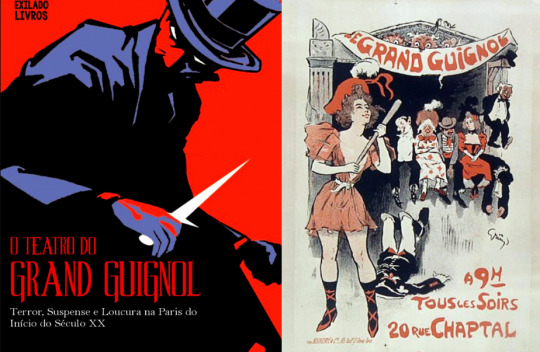
Looking back on it, the first time I encountered the term Grand-Guignol was also the first time I looked at Fantomas, when I picked up the book above titled The Theater of Grand Guignol, which is all too fitting as Fantomas is Grand-Guignol to it's core. It's also a term that I've seen applied a couple of times to The Spider as well as some darker fan reinterpretations of Batman. Like film noir and sword-and-sorcery, it's a term for a type of storytelling that's associated with dime novels and pulps, influenced and was influenced by them in return, but isn't really the same thing and is, in fact, a separate "genre" (not quite the right term).
Indeed, if the common cultural association of pulp is that of something trashy and violent and darker than it's contemporary culture, one can see Grand-Guignol as perhaps the darkest of it's adjecent family, the Dario Argento to pulp's John Carpenter, the cracked mirror to all that exists.
Short and full-length plays were based on the hot topics unseen onstage at this extent before, from graphic scenes of murders, tortures, sexual violence to psychological thrills like resurrections of the dead, incest, suicide, characters being hypnotized, trapped or guilty of their loved one’s deaths. In most cases, it was a combination of several of those themes in one piece, which of course, multiplied shows’ popularity - AngryFishTheatre's article
‘At one performance, six people passed out when an actress, whose eyeball was just gouged out, re-entered the stage, revealing a gooey, blood-encrusted hole in her skull. Backstage, the actors themselves calculated their success according to the evening’s faintings. During one play that ended with a realistic blood transfusion, a record was set: fifteen playgoers had lost consciousness. Between sketches, the cobble-stoned alley outside the theatre was frequented by hyperventilating couples and vomiting individuals.’
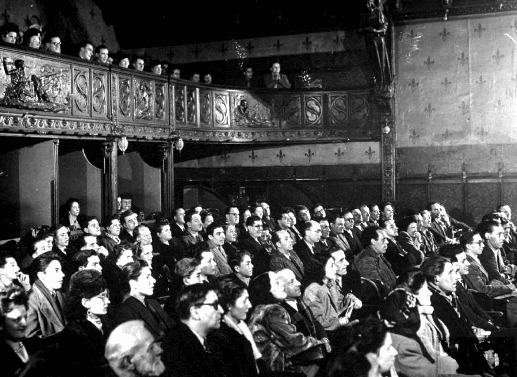
Despite of its scandalous nature, for France Grand Guignol was more than a theatre: it was a tradition, an institution, and an attraction like the Eiffel Tower or the Folies Bergères, and Maxim’s... It was then highly fashionable. Celebrities of the day, South American millionaires and errant royalty went there assiduously to be scared out of their wits.
Going to the Grand-Guignol was less a social act than a private one and certain audience members preferred not to be seen. Some witnesses reported that the iron-grilled boxes in the back of the theater encouraged a certain ‘extremism.’
The cleaning staff would often find the seats stained - — Mel Gordon, The Grand Guignol: theatre of fear and terror.
It lasted almost the exact same time period as the American pulp era (from the late 1880s to 1950s), and even in it's origin, as the theater itself was built out of the ruins of a church, and it would attain fame and legacy as the shadow opposite to Moulin Rouge's glamour and spectacle. It's original intent on being focused on naturalistic theater led to breakthroughs of horror that made it the whole selling point, and much like the pulp lords of terror I talk about, their staged and spectacled terrors were still no match for the horrors of reality that followed.
“We could never equal Buchenwald,” the Grand Guignol’s final director, Charles Nonon, told TIME magazine that year. “Before the war, everyone felt that what was happening onstage was impossible. Now we know that these things, and worse, are possible in reality.”
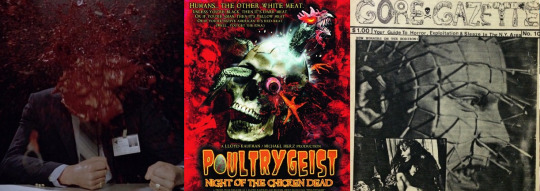
And of course it goes without saying that the Grand-Guignol's influence on storytellers long transcended it's original lifespan. Gore for gore's sake is hardly something I enjoy, but I've definitely enjoyed many, many films that reached to extremes of horror and violence and gore for horror and comedy alike. I would not claim the Grand-Guignol started this because I could very well be missing out on something, but they are undeniably a huge part of the history of horror as we know it, along with the German Expressionist works of the 1910s that were as well both inspired by, as well as influential, on the Grand-Guignol.
Time and time again we see the pattern emerge, of creators or outlets or mediums that emerge as cheaper and less critically-reputable alternatives to the mainstream attain extraordinary and influential success both in their circles as well as those who would never admit to looking at them for inspiration otherwise. In fact, you could very well argue that it’s alive not just through films and comics and so forth, but in newfound forms of media created by people with all the freedom to put together whatever their imaginations and limited resources and lack of restraints can create.
Like Youtube Poop.
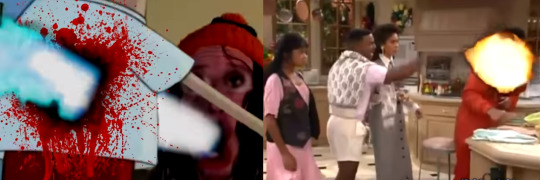
Now maybe I'm biased here because I grew up with YTP, but really, the main intent behind every YTP is to twist the media it's using to provoke a new reaction from you, every YTP is varying levels of a rollercoaster of jokes and edits and little narratives stacking up and flowing together, references and poop jokes and murder jokes and slurs and parody and criticism and SuS and literally anything the creator thinks is gonna get a reaction that wasn't in the original material. And it doesn't even have to be exclusively about jokes, there's a lot of YTPs that are centered on horror or drama or even are just completely original narratives using the assets at hand, sometimes even clocking in at almost movie-length.
There's no filter or censors or teams making sure it's tested to the audience, it's just as much chaos as someone with video editing skills can manage to create, and more so than anything else nowadays, it's the medium that abides and amplifies the same principle that ruled and defined Grand-Guignol: "The Hot and Cold Shower"
Grand Guignol, was not the inventor of this concept, but probably the first performing arts company that used it as its main programming principle. Every evening at the theatre was programmed with plays heavily contrasting in their nature. In the 6 plays presented on a regular night, every 2 horror plays were followed by a light comedy and the light comedy by another horror play or two. Using this contrast the creators aimed to give their audiences a fuller range of emotions. They called it a "hot and cold shower".
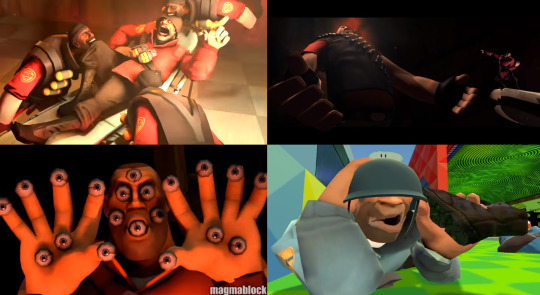
You could also make a similar argument for creators that used Garry's Mod or Source Filmmaker to create Youtube content, many of whom either followed the styles of YTP or created their own which ended up influencing others in return, and you can definitely see how YTP as well as these have influenced our current generation's taste in comedy as well as the editing styles of many prominent creators. It even seemed for quite a while that GMOD and SFM content of this type was dead, but it definitely seems like it's gotten a revival recently, and really just never went away. Likewise, a lot of people think YTP died circa 2012 or 2015, which is completely false, it just changed a bit, as things tend to do if they are to stick around.
The entire approach of extreme hot and cold, extreme horror and comedy shuffling per second and extreme absurdity overriding is something you definitely get nowadays a lot more out of these newer forms of media than anything that film and television's capable of giving, and just as Grand-Guignol started out relatively ordinary (focused mainly on naturalistic horror) before it completely spiraled into a perpetual race for excess, we've gotten so desensitized so quickly to surprises that you can see in real time the growing needs for content that's faster and more chaotic and funnier and more dramatic and more absurd and more well-produced but also worse produced and, yeah.
I definitely wonder how we may see future filmmakers and cartoonists and creators be influenced by, not just the above, but also the rapidly changing landscapes of meme culture and social media and the gradually less-funny theater of the absurd that reality's become. I definitely imagine we'll be in for some interesting times.
Y'know, if we make it that far.
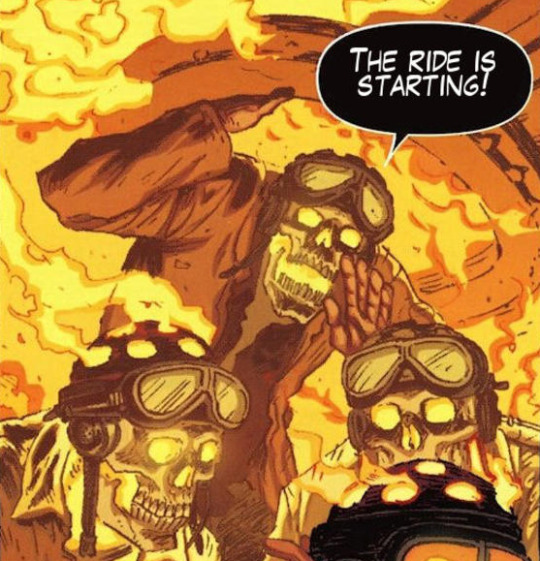
Alternatively you could also argue Jackass is also a modern Grand Guignol and they just cut out the narrative middleman to get straight to the "people getting fucked up for your amusement" part, but at this point I'd just be inviting a retread of all the "Is -X- pulp" questions I got for "Is -X- Grand Guignol", and I may have stepped straight into a rake with this one.
#replies tag#grand guignol#fantomas#pulp fiction#tf2#team fortress 2#poultrygeist#youtube poop#ytp#sus
46 notes
·
View notes
Text
Writebr Intro
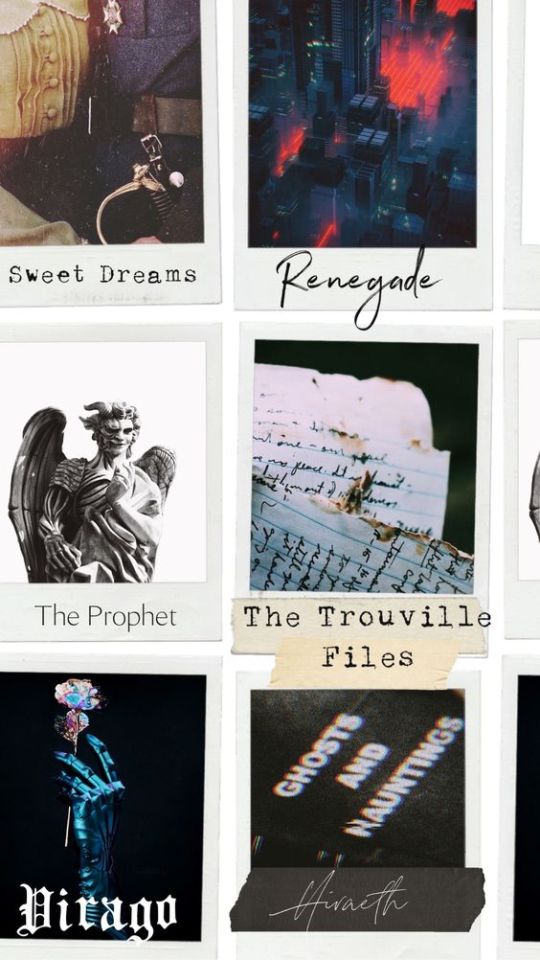
Writeblr Intro Time!
Hiya! This is so overdue and I apologize for that lol. I’ve been meaning to write this but school seems to always be getting in the way of just that. Writing. But here I am finally writing this! And yes my username is a pun of my own last name but I just couldn’t resist.
So basically, I really want to surround myself with other writers and have stumbled across tons of writeblr’s (I think that’s what they’re called lol). Instantly I was in love and wanted more of what the community had to offer. I’ve been a self-proclaimed “author” or writer since my early years of grade school. I was that child in the back of the class with ADHD that couldn’t sit still (the cliche bouncing leg and always chewed down nails) and had what my mother called an “overactive imagination”. My notebooks in high school were often filled with wild stories about “galaxies far far away” or dystopias with cruel governments ruled by dictators. Now I’m in my second year of college swamped with classes about the Psychology of criminals (or I like to call the science of murder), and trying to find time to write a novel. So the struggle is real my dudes.
A little about Me:
Hana
20
She/Her
Pisces
Asexual
Forensic Psychology Major and English with a concentration in Writing Minor
Book hoarder
Dog Mom
Vintage AF
Low Key Emo Punk because I’m no average white girl!
History nerd (Love learning about the old wars and cultures)
Movie nerd (There’s an endless stack of DVDs in my house)
Fandoms:
The Mandolorian (or the ManDADolorian)
Star Trek
Star Wars
Hannibal
X-Files
King Falls Am
Welcome to Nightvale
Transformers (Obviously not the bad movies lol. Bumblebee is baby and must be protected always.)
Good Omens
Sherlock
Lord of the Rings
Marvel (There are so many shows and movies in this category we would be here all day if I tried to list them.)
Timeless (Not sure if the fandom is still alive after what the writers did to one of our ships lol)
DC (I’m a huge Batman geek and adore Wonderwoman, but I take the good with the bad when it comes to this fandom. Especially movie-wise anymore.)
And there’s probably more but my memory isn’t working currently.
Goals?. . . maybe:
Get my novel finished (This has literally been on my To-Do List for who knows how long.)
Meet more writers/new writers.
Improve my poetry (I suck at poetry so I bad I never let it see the light of day, so I need to work on it.)
Start my bullet journal.
Wips:
Okay by now you all know I have at least 1 Wip because I mentioned getting a freaking novel done, but just as a precaution as to what I mean by Wip or Wips. I get distracted quite easily, for some odd reason my brain absolutely loves to jump from one idea to another for no absolute reason. Like WTF dude we already have an idea we’re working on why do you keep bringing all these new ones to me like stray dogs. And like any good dog Mom or distracted writer, I want to keep all the ideas/stray dogs. So, when I say Wip I mean “Look at this cool idea I came up with” and I’ll make sure to specify which one is hogging most of my time.
Renegade: Dystopian, Thriller, Post-Apocalypse, and Science Fiction.
This is my baby. Most of my free time is dedicated to adjusting plotlines, character arc’s, fixing freaking plot holes, and other important stuff other than just plain writing. I’m hoping to finish this also monster of a story by 2020 and get it published. So big stuff!
“So tell me little wolf do you want to punish those who have wronged you?” An assassin known as the Crimson Ghost makes their way through the corrupt city-state of Ashton completing a job given to them by the Black Rose. What is a seemingly normal job though turns into something far more complicated when they stumble upon the fractions of an abandoned notebook from the past. A past the Republic is trying to desperately hide and bury no matter what. On the other side of the world in the Republic’s capital Eshar, plainly referred to as “The Prodigy” or “machine” by his superiors, Eric Coalwood has built a life upon the ashes of his family, striving to meet the high expectations set before him by his mentor General Wolfheart. However, his life falls out of its normal day to day routine when the unexpected is asked of him. Command a task force made up of the Republic’s most wanted or his life is over. Eric doesn’t need reasons for why he must do what he has to, all he needs are orders and the Republic is more than happy to give them. Either way the clock is ticking for both the Crimson Ghost and the Republic’s prodigy and with time running out they both have two options. Either get over their different beliefs concerning the Republic or allow the world to once again succumb to war but this time nobody is going to survive it. “Legends are slippery things. For the glory that coats them hides the pain, suffering and death that created them.”
The Trouville Files: Dystopian, Thriller, Post-Apocalypse, and Science Fiction.
Not my biggest priority but definitely one of them considering the plot of this story. I mainly use this wip as a reference for Renegade because it’s actually the prequel to it. Also, it’s great to use as writing practice when I’m plagued with writer’s block for Renegade or frustrated with a plot hole. So this is my double-edged sword that does a lot of good.
“Death in these black days is neither kind nor quick.” The year is 2153, the world we know is nothing more than a wasteland strewn with the dead and a sky being choked by their ashes, not glorious and thriving but desolate and starving. The Red Death, a pandemic with a steady progression and a gruesome countdown to the demise of those infected. No one outruns it or survives it. “United we stand, divided we fall.” The Allied Nations, a totalitarian superpower, promised a united people but all they gave this world was more death and destruction. The Red Death isn’t the only thing slowly killing humanity anymore, we are in the form of the War of Broken Pacts. The spark of revolution is lit, but if it will remain so is a question asked by everyone. Does it stand a chance against the iron-fisted government holding the people in shackles? “Rebel with a cause.” Genius Medical Officer for The People’s Republic, Cyprus Ramiro works day and night in search of a cure for the Red Death exterminating hundreds, at least before this war kills him first. But he is also a man on the run and the rebellion can only shelter him for so long. “Duty over pain.” Cunning Spy and Soldier, Orion Ultor is ordered by the Allied Nations to infiltrate and gather information on the ever-growing People’s Republic. In bold letters is Search and Destroy; make a ruin of the rebellion and ensure the Allied Nations remains as it should -- unquestionably in power. No matter the cost unless he wants to suffer the consequences again. “If we fall we shall rise from the ashes like a phoenix.” They should have never met, battlefields don't make good friends. It wasn't fate, it wasn't destiny, only war throwing people together. The Allied Nations is trying to stamp out something they fear, but can they before the Red Plague? Or will humanity find itself extinct.
Beyond his point is where I house my stray dogs/ideas
Hiraeth: Paranormal, Horror, Mystery, and Thriller.
Scooby-doo who?
Hiraeth means a homesickness for a home which you cannot return. That is how Arcane feels like she’ll never be home no matter how hard she tries to connect with her family. The closest she feels to being home is with her friends and in the worn leather seats of the van they all pitched in to buy. It all started out as a way to pass time and for all of them to escape their families because to be honest parents never understand, but it all turned sideways when a simple “ghost hunting trip” stirred something that was meant to remain buried. The truth never remains buried though, not really, somehow it will always creep back in ugly and twisted. Arcane has never felt “at home” but she’ll do whatever it takes to keep what she considers her family safe.
Sweet Dreams: Historical Fiction, Thriller, and Romance.
A literal dream turned into story plot and no I’m not kidding.
The Red String of Fate, The Lovers, and War. These are the three elements intertwined within the plot of Sweet Dreams but before anyone makes any assumptions this isn’t some chummy rom-com. There will be tears and heart strings may get yanked clean out because the angst is real. War and love never mix well, it leaves a sour taste in ones mouth and makes the mind question things it shouldn’t. Like is the woman in his dreams the same woman he sees in all his dreams? Constantly he somehow ends up spotting that same ruby red lipstick, honey golden eyes, and brunette hair laying in perfect curls. She’s everywhere except in his actual life. They say you and your soulmate share dreams, living proof of how intertwined souls are. She doesn’t believe in love or the idea of souls, not with the monsters roaming around the countryside and battlefield carrying assault rifles. Society tells her where her place is, but she disagrees and rather create her own destiny.
The Prophet: Paranormal, Thriller, Post-Apocalypse, and Science Fiction.
A short story I can’t seem to let go or it doesn’t want to let me go, but either way, this story has the makings for something great. It also at times seems strikingly similar to Good Omens, so don’t be surprised.
There’s no anti-christ in this story, he already has a book about himself so let’s not make another one besides there are other stories that need to be told. Such as, have you ever heard of modern day prophets and I’m not talking about those people with cardboard signs saying “the end is near!” or giant churches with people preaching about the end times. No, I’m talking about a kid with messy hair and dark circles under their eyes because sleep is no longer a choice due to migraines that plague them every night. Migraines that bring weird cryptic messages that make one question their own sanity. And what happens when strange people start asking about said migraines and messages?
Virago: Fantasy, Thriller, Historical Fiction, and Romance.
I’m not a huge fantasy reader, for some reason I can’t stay invested in them, but here I am with a fantasy story in my wips. It has mages, knights, assasination plots, and one super badass general who takes zero shit from her king. That’s right women empowerment, my dudes! I don’t really have much of a synopsis inline or a plot because this is only of those wips I let rattle around in my brain from time to time. But I will say it does give me that LOTR vibe but also Game of Thrones.
Don’t be surprised if you see my stray doggos from time to time because I will admit I love to play around with storyboards. Even if I don’t have a fully planned out plot put together for it.
And that concludes this what was supposed to be short Writeblr Intro. I hope I have peaked some of your guys’ interests because the community definitely got a hold of minee. Feel free to send me a message about anything I mentioned (even if it’s just fandom shit I don’t care) and don’t be shy. I’m a huge introvert but somehow love talking, so don’t worry it won’t be awkward and odds are I’m equally nervous about conversation lol. Also, feel free to add me to any taglist and reblog/like if you’re active and would like more Writeblr mutuals!
Happy Writing,
Writings-from-the-Hart
22 notes
·
View notes
Text
Best of DC: Week of September 25th, 2019
Best of this Week: Harleen #1 - Stjepan Šejić and Gabriela Downie
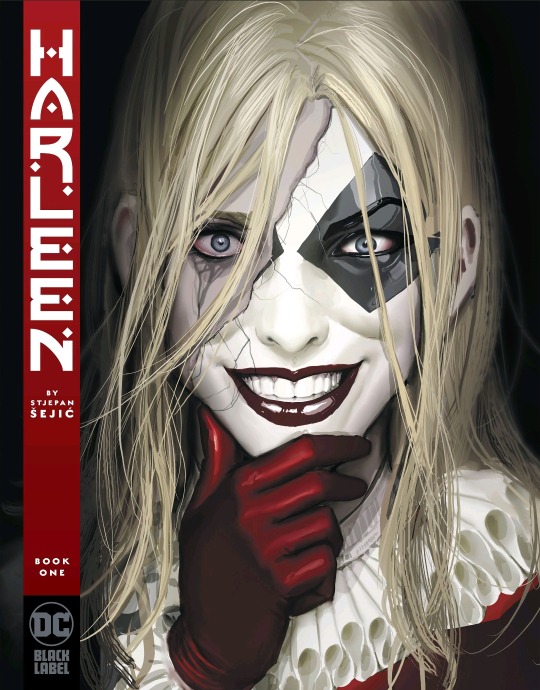
Hindsight is 20/20.
Looking back through the history of Harley Quinn, you’d be a fool to think that she hasn’t taken a strong look back at her life before she became the psychotic Clown Princess of Crime at The Joker’s side. We’ve seen the story told many a time in movies, comics and cartoons, but there’s just something so inviting about the way Šejić presented this absolutely tragic origin story, at least for the first issue. As Harleen describes it, "it felt like one of those cheesy romance novels."
Harleen separates itself from the other Harley Quinn origin stories by taking that cheesy romance and turning it into a long form car wreck centered entirely around Dr. Quinzel’s point of view and her early interactions with The Joker and the other criminals of Arkham Asylum. If I had to level a complaint at the book, it would have to be that, at least initially, everything is quite flowery and light. To counteract that point, it makes sense for the story to be told in this manner to show the often manipulative nature of abusive relationships like Harley Quinn’s and how ultimately, they don’t end well.
The book opens with Harleen in a dream sequence taking place in a distorted Gotham City. The style here is very reminiscent of Šejić’s work on Death Vigil with dark cityscapes, many shining lights and gothic imagery throughout. Dr. Quinzel walks down a winding road, expecting the same nightmare that she’s had many times before, but there’s something different about this particular dream. Instead of being eaten by an unknown monster, she’s met with the arrival of a bat monster and a pale man with green hair that’s being attacked by him and she chooses to intervene, smiling back at the pale man as he smiles at her. With the narration of this book, it’s easy to assume that this dream sequence takes place a little while after her relationship with the Joker is fully formed as she even acknowledges that smiling back was the biggest mistake of her life.
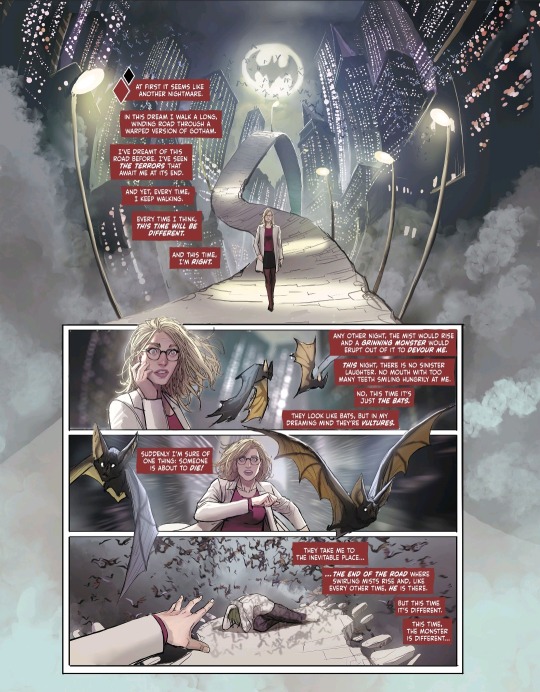
We get a beautiful page of Joker and Harley dancing and looking happy with each other as Harley’s future transformation occurs in the panels behind them. As beautiful as these shots are, the way that Šejić draws these panels, looking like glass shattering in the background is very telling of what we’re to expect in these future issues. Things transition to a little bit before Harleen meets Joker for the first time as she interviews a veteran who tells her about his “one bad day.” He describes how he and one of his Battle Buddies had each other’s backs until the other guy got his throat slit by a woman in a local bar during their deployment. The veteran describes how he just snapped in that moment and we have something that will be called back to in later pages.
A few years later, Doctor Quinzel presents her interview and findings to a Scientific Symposium in Gotham and it appears to be going badly. She shows her research notes and tells the crowd that the veteran then shot up a hospital full of injured kids and that her research, if implemented, would help decrease the recidivism rate of crime in Gotham by identifying what exactly made them go bad in the first place. She starts to flub her words and get nervous as some in the crowd check their watches, look disinterested or just leave altogether.
Harleen and her friend Shondra go to get drinks and talk about how the good doctor thought she nuked her presentation, they leave separately and it's almost as if fate was just waiting to kick down the door when an explosion rings out and Harleen faces down the barrel of The Joker's gun.
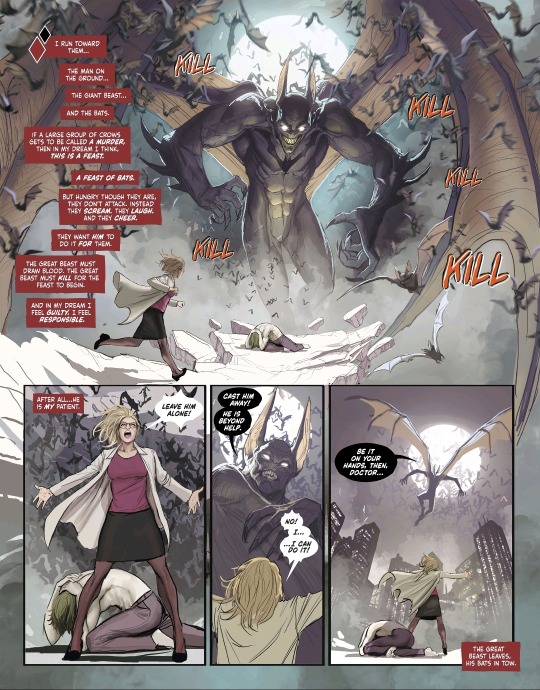
This moment is when I fell in love with this book. In a beautiful double page spread, Harleen looks on in abject horror as The Joker aims his gun directly in her face with a wide, toothy grin. The most disturbing part of this is how he's framed as still being a sexy bad boy. He's tall, slim with medium length hair and gives off a sickening charm. He's very distinctly a Sějić Joker and his art style lends well to that.
In an instant, however, he sets the entire tone for how their relationship will be in the future - threatening her life, but pulling back after seeing her face full of cold fear. In the background we see her life flash before her eyes. From her childhood of uncertain career choices, to her adulthood of being attracted to people that she's not supposed to be, like one of her professors and eventually her current job as a criminal psychologist.
Through this we see exactly what kind of roller coaster her life had been and how, from an early age she just wanted to help people. It's the very definition of "the road to hell is paved with good intentions" which is one of the central themes of this story.
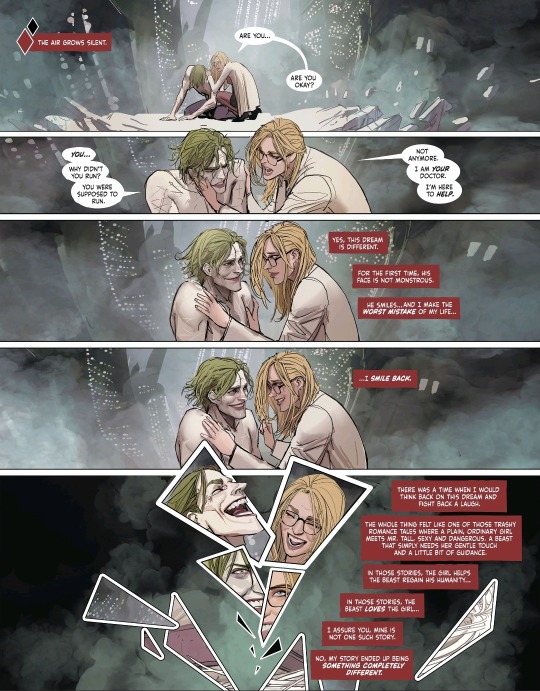
Joker let's her go after savoring her fear before he is stopped by the Batman. This action sequence is fairly standard Batman faire, but from Harleen's point of view it becomes something more. She is absolutely terrified, not just because she almost died, but because she's found herself interested and immersed in the Joker and Batman's struggle. Everything in her mind is telling her to run away, but as Batman catches an escaping Joker and pummels the tar out of him, she follows and can't look away.
She hears the others in the crowd and feels that there's something wrong. The panels are arranged into a deranged smile of blood as Batman holds Joker by his collar and the sounds of his punches are replaced with the rabid howls of bloodthirst. She feels a bit of sympathy and the agony of post trauma nightmares over the next few days. After coming in to work soon after, one of her bitchy coworkers asks who she slept with to "get it," and she soon finds out that her research has been funded by the Wayne Foundation as she is met by Lucius Fox.
During their conversation we see more of her own pre-crisis personality come forth. Finding her nervous, insecure and initially unsure as to why she was called into her bosses office in the first place gives us perfect insight as to how the Joker will be able to manipulate her in the manner that he does. She not dumb or naive by any means, but she appears to lack a serious emotional strength. Sejic is good at writing characters like these as seen in his work on Sunstone and Switch and it gives her a good flaw in her personality.
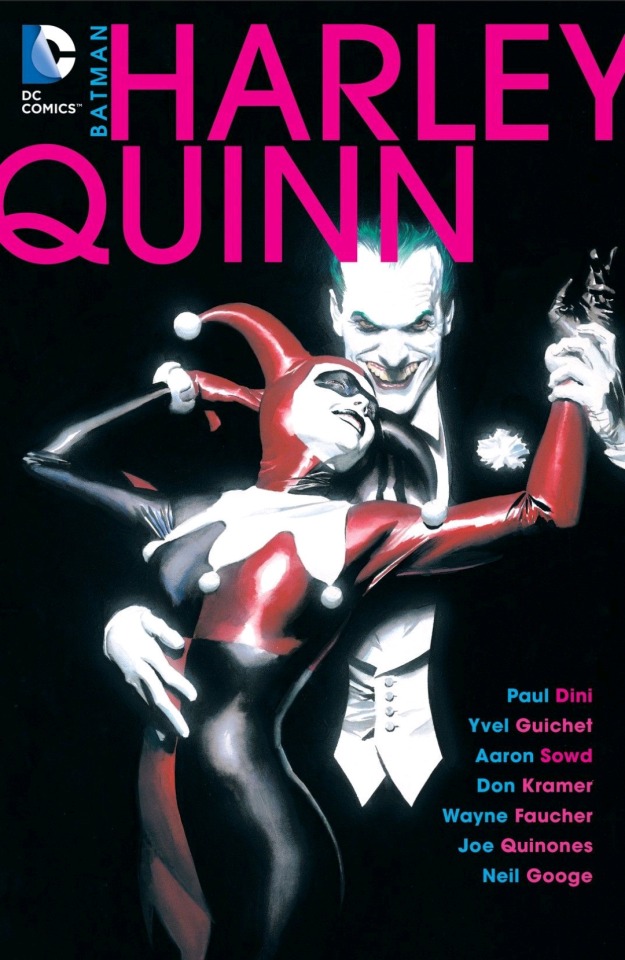
Fox tells her that she’ll soon be transferred to Arkham Asylum to talk to the worst that Gotham has to offer and this last third of the book is rife with on the nose symbolism. As soon as she arrives at Arkham, the shadow behind her morphs from Harleen Quinzel into the form of Harley Quinn and the shadow of Arkham's ominous gate sign becomes the perspective of someone on the inside looking out.
Within her first few days, she meets people that will be very close to her in the future such as Pamela Isley and Killer Croc to real headcases like Victor Zsasz and The Riddler. She's also met with the disrespect of having her name mispronounced numerous times by the Arkham staff, outright dismissal of her theories by Dr. Hugo Strange and pushback from Gotham District Attorney, Harvey Dent.
Harvey in particular is most interesting because of his firmness in his ideals. He doesn't believe there's any rehabilitation for the residents of Arkham and that they should be sent to Blackgate Penitentiary instead. Harleen is steadfast in her beliefs that there's more to each of these patients than simple violence and crime. Harvey notes that Arkham has a breakout rate so high that it might as well install a revolving door.
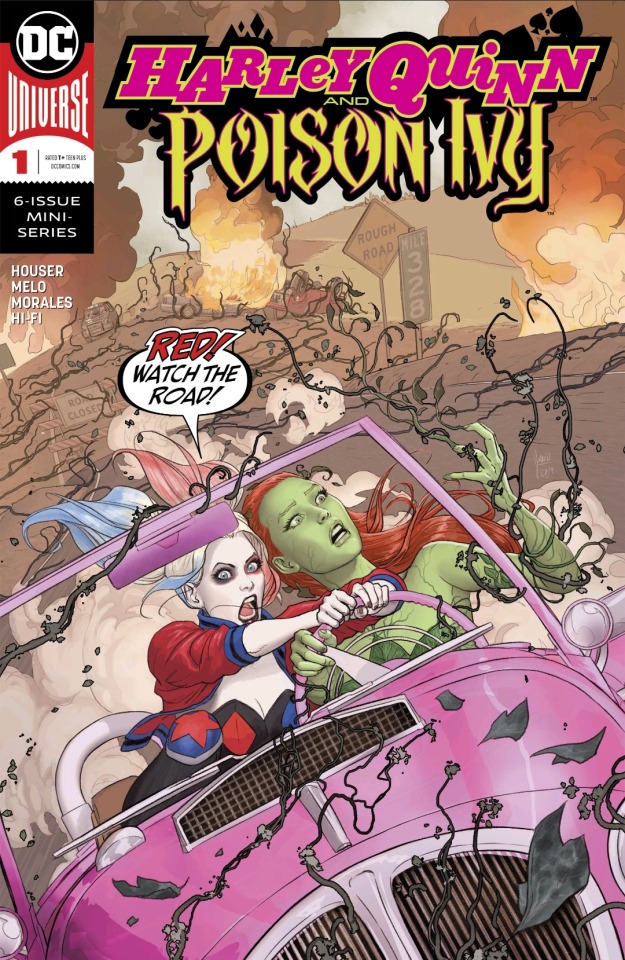
Throughout their argument, half of Harvey’s face is covered in shadow, specifically the half that would later become the deranged side of Dent’s future alter ego, Two Face. This is intriguing because in many ways this meeting feels like a shakedown, a foreshadowing of the man that he would soon become. In one instance he remarks of the beauty of Gotham City and in the next he just flat out tells her what he wants, almost threateningly while rolling his coin over his fingers. His moralizing is betrayed by his furrowed brow and eyes of fury over the sheer thought of Gotham having criminals like Zsasz freed because lawyers blame his mental illness for his horrid actions.
Harleen, infuriated that Dent would ask her to end her research and refuse the Wayne grant so smugly, found herself driven to conduct the one interview that she had been avoiding after going through the likes of Mad Hatter, Killer Croc and The Riddler. The night before her meeting with Harvey, Harleen had gone through all of the Joker’s interview tapes. One thing that stood out to her was Joker’s propensity to retell his “troubled” past in a variety of different ways, Šejić’s own take on the Multiple Choice origin story of the Clown. She felt mildly annoyed by how underwhelming they all were until she found a tape of Joker being arrested and him speaking the way that he did the night that they first met, saying that Gotham is full of civilized monsters and all they needed was a push to send them over the edge.
Just like the veteran in the beginning.
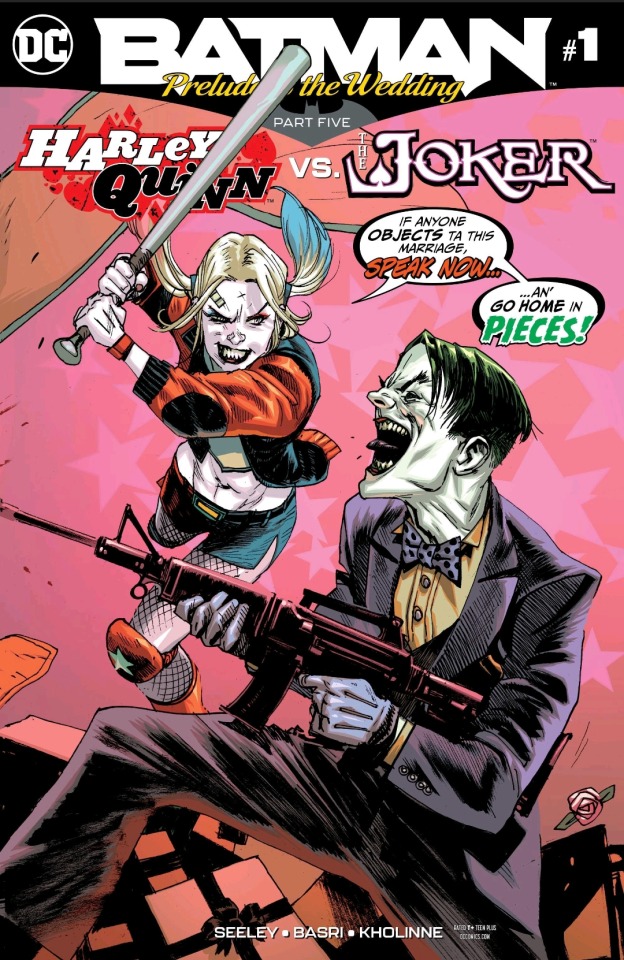
Harley needed a full nights rest to get the courage to interview The Joker and tried a multitude of methods from horse tranquilizers, to a chiropractor, to just simple drinking, but it was Dent that gave her what she needed to go. When Joker and Harleen meet face to face again, he doesn’t recognize her until a sudden SLAM on the glass brings back her look of shock and terror, allowing the Joker to remember her.
With their pleasantries exchanged, he asks her to refer to him as Jay and we jump into the inferno.
Stjepan Šejić is an amazing artist and writer with a knack for writing fun and silly characters. He can also delve into dak territories and themes when he needs to and while this issue is more comedic and funny, it does hide some very dark bits of story underneath. The best way to describe it would have to be...a calm before the storm. Everything in Harleen’s life is at a perfect place. She’s got the dream job that she’s wanted for her research, she’s found very interesting subjects and one in particular that might be the break that she’s been looking for. But we all know what’s on the horizon for her.
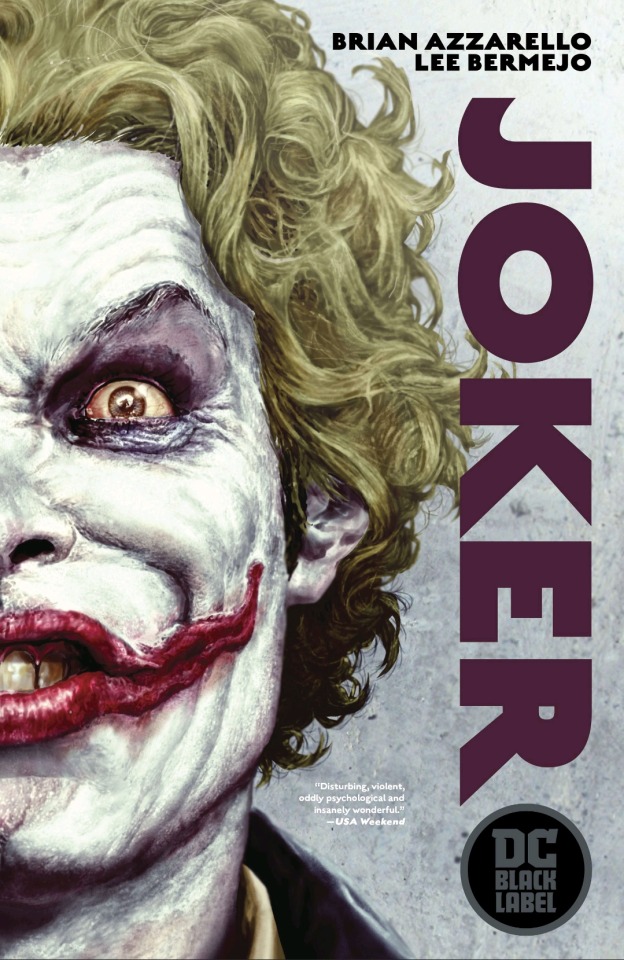
The problem I can see people having with this is the common, “this story is going to glorify the abusive relationship between Joker and Harley!" I don't see it turning out that way. I think it's very clear to Dr. Quinzel and the reader that The Joker is wearing a mask. His charm is an ugly façade worn to hide the monster underneath, but she just can't turn away, especially since he's been the subject of her dark dreams for a while.
I think that the next issue will show just how the cupcake stage of their relationship with the dark underpinnings slowly transforms her from a reasonable psychologist into a sympathetic beauty that's found her beast. Šejić only showed us a small part of his writing and art powers and since the second issues of these Black Label books tend to be the best issues, I have no doubt that the next Harleen will be amazing. High recommend
#dc comics#comics#harleen#harleen quinzel#harley quinn#stjepan šejić#stjepan sejic#dc black label#the joker#comic reviews#comic review
41 notes
·
View notes
Text
MONTHLY MEDIA: October 2019
The spoooooooooookiest time of year is wrapping up but I’m not ready for it to go! Time to pop in A Nightmare before Christmas. Also this is how I spent the month of October.
……….FILM……….

Hotel Transylvania (2012) & Hotel Transylvania 2 (2015) Both are fun movies with killer animation and those music/pop culture jokes that immediately date them. I wish these were a little more evergreen, but I do appreciate how much further the animation was pushed in the sequel. It also does the dance-number thing that I’m just too old for.
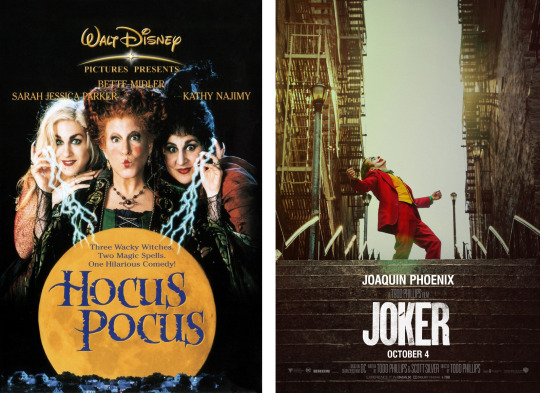
Hocus Pocus (1993) It’s been yeeeeeeears since I watched this and I don’t hold much childhood fondness for it (Billy Butcherson was peak fear for me) so it was nice to find that this holds up well! The musical number, the animated cat, the jokes, they’re all far better than they have any right to be for a roughly 25 year old film.
JOKER (2019) I’d read enough glowing and scathing reviews going into this that I really wasn’t expecting much. The cinematography and soundtrack are both excellent, and it really got the spirit of the character in the third act. It really did follow the origin story format and while it’s new to see this be applied to a villain, I’m not sure I needed it in my life. I also really just want a fun Batman movie, you know?
……….TELEVISION……….
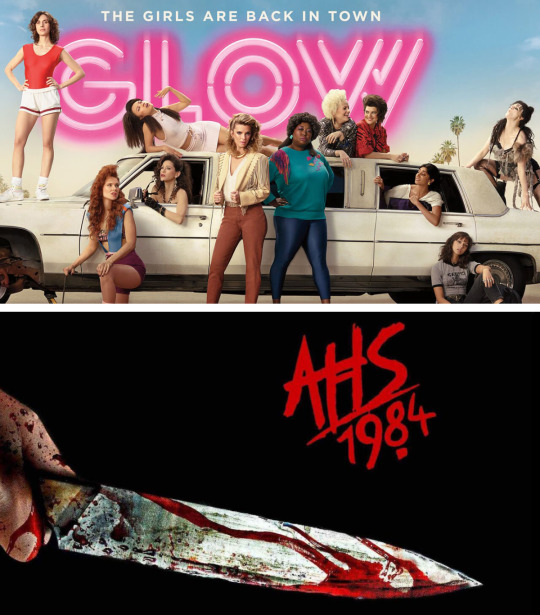
GLOW (Episode 3.04 to 3.10) Another fantastic season. It struck a good balance of tying up loose threads while still having a clear vision for the final season. Just such a good character drama. I’m interested to see if there’s more wrestling again next season, but I really wouldn’t mind either way.
American Horror Story: 1984 (Episode 9.01 to 9.06) Okay so I’m only half watching this while my partner watches it (I play my Switch beside her and accidentally look up at the goriest moments). The aesthetic is great and the music is fun. The plot also seems to be fairly coherent so far, even if I’m only half paying attention.
……….READING……….
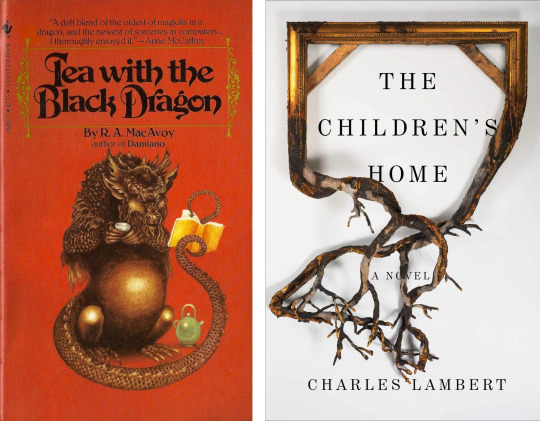
Tea With a Black Dragon by R. A. MacAvoy (Complete) I picked this up from a thrift store knowing very little about it. It was super light on fantasy but was a fun, albeit dated, technology-based mystery.
The Children’s Home by Charles Lambert (Complete) It’s tricky describing this book. It’s almost surreal and the story feels secondary to the prose. It’s not the type of novel I typically pick up but I’m glad I did. It follows a recluse as he takes in children that start appearing in and around his home. I think it’ll be one of those books that I didn’t love reading, but will stay with me for a long time.
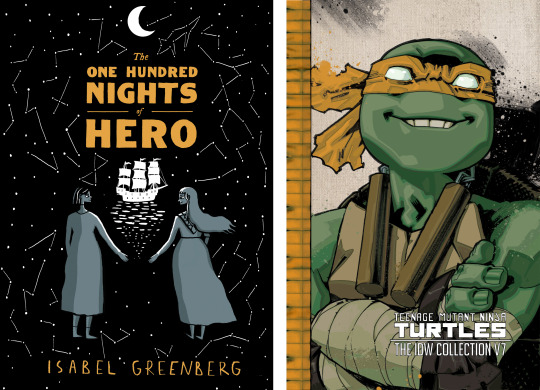
The One Hundred Nights of Hero by Isabel Greenberg (Complete) Simply wonderful. The story follows two lovers and the stories one tells to protect the other. It’s romantic and heartbreaking and each short story has that fairytale vibe (charming yet full of danger). The art is equally fantastic and really I can’t recommend it enough.
Teenage Mutant Ninja Turtles: The IDW Collection Vol. 7 by Kevin Eastman, Bobby Curnow, Tom Waltz, and so many more (Complete) I think it would’ve been bold to wrap up the series after volume 6 but I understand the nature of the beast. With that said, I appreciate it took a little time to get to where it wants to go and it’s still a fun world. It also continues to really bog itself down with the plight of humans and I appreciate it grounds the world but ho boy are April’s family boring when compared to mutants, demons, and aliens.
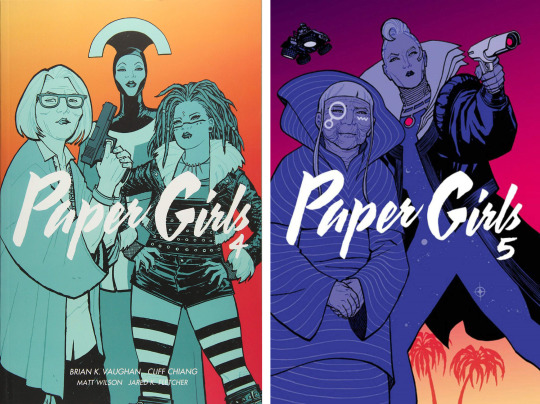
Paper Girls Vol. 4 & 5 by Brian K. Vaughan, Cliff Chiang, Matt Wilson, and Jared K. Fletcher (Complete) Reading two volumes in quicker succession turned out to be a good decision. If anything I’d recommend waiting until all 6 volumes are collected and read that, if you can. It’s been such a wild ride and I really hope they stick the landing in the end. Excellent so far and highly recommend.
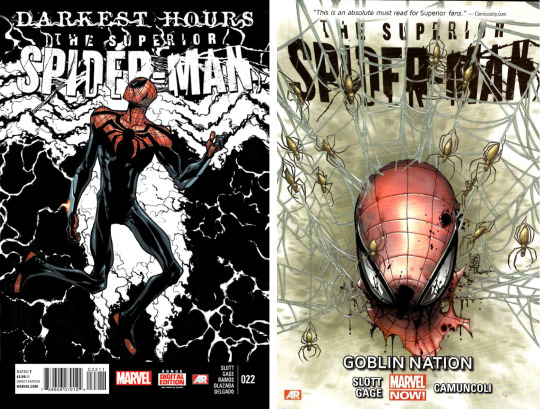
Superior Spider-Man Vol. 5 & 6 by Dan Slott, Ryan Stegman, Giuseppe Camuncoli, Humberto Ramos, and so many more (Complete) What a great series! The themes of the series are a little looser towards the end (in favour of a big, bombastic climax) but it still works. Or maybe it just doesn’t hit you over the head with it (there’s maybe one throwaway line by the main villain that ties it all together so it’s easy to miss). I’d love to see this collected as well and also recommend to any Spider-Fan with some established understanding of this world’s characters.
……….AUDIO……….
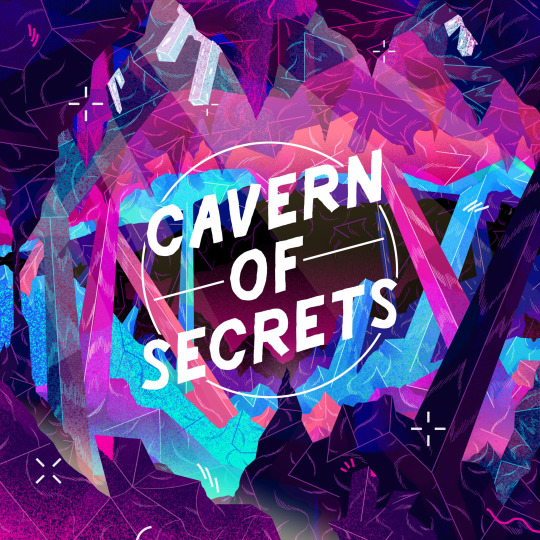
Cavern of Secrets (Podcast) This has been on hiatus for years and now that it’s back, I realize how much I missed it. Solid interviews and having a Canadian host is always nice.
……….GAMING……….
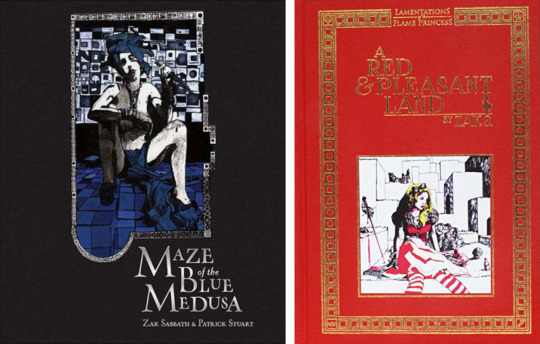
Maze of the Blue Medusa (Satyr Press) Oof we had a player get both arms crunched in an accident and it’s still affecting the group. As they delve deeper they’re discovering how dangerous the maze can truly be.
A Red & Pleasant Land (Lamentations of the Flame Princess) The group wandered into a settlement and had A LOT of questions answered. Like the last 10 sessions were a blur and suddenly it all came into sharp focus. I’m keen to see what happens next time.
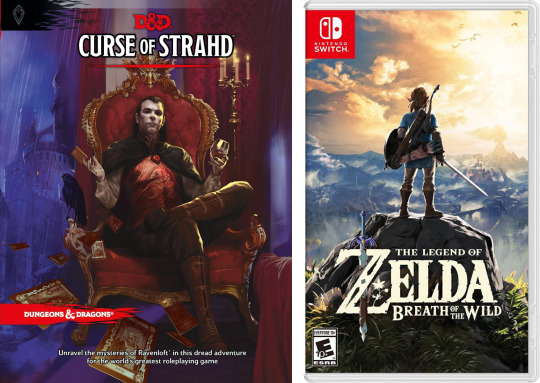
Curse of Strahd (Wizards of the Coast) The party is nearly out of this haunted house and has defeated a sacrifice-made monster of unspeakable horror! Now for them to try to escape.
Breath of the Wild (Nintendo) Playing on Master Mode has completely changed how I play. As has the Korok mask and the hero’s path. Still so fun and rewarding.
And that’s it! As always, I’d love to hear recommendos for stuff to read, hear, play, and watch and I’ll see you in November.
Happy Thursday!
21 notes
·
View notes
Text
Look On My Works, Ye Mighty... - Watchmen blog
(SPOILER WARNING: The following is an in-depth critical analysis. if you haven’t read this comic yet, you may want to before reading this review)
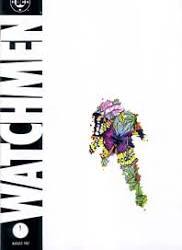
Adrian Veidt, aka Ozymandias, is the character we probably know the least about, and some could argue that leaving it until the penultimate chapter to fill in the gaps is leaving it a little late, but as was the case with Doctor Manhattan and Rorschach, it was important that we got to see the character and his impact on the world of Watchmen before we got the full story. Plus I imagine Alan Moore was very hesitant to give us too many details about Veidt in case he ran the risk of revealing his hand too early and spoiling the twist. Look On My Works, Ye Mighty offers many answers to the burning questions throughout the graphic novel whilst offering us a chilling insight into the last remaining superhero archetype that had been unexplored until now. The ‘liberal’ capitalist.
Up until now, we know precisely three things about Veidt. He’s rich, he’s clever and he’s an innovator. It was his subsidiary companies that utilised Manhattan’s superpowers as an alternate energy source, making America eco-friendly and revolutionising technology at the time. He’s also the one superhero in the novel that the general public actually seem to like. Most likely because of his willingness to reveal his secret identity before the Keene Act was passed outlawing superheroes and using his vast wealth and influence to try and help the world instead of merely donning a costume and beating people up. However he’s not popular among other superheroes, most notably Rorschach and the Comedian. With Rorschach, the reasoning is obvious. He’s right wing and homophobic, so naturally he’s at odds with Adrian from the get go. With the Comedian, it’s his cynical nihilism that prevents him from seeing Adrian as anything other than a naive fool with delusions of grandeur. And the dislike is mutual. Adrian openly dislikes Rorschach and, in this very issue, he condemns the Comedian for being Richard Nixon’s lap dog, accusing him of being behind the assassination of JFK and working to keep Nixon in power beyond his term limits (whether this is actually true or simply the conspiratorial ramblings of a bitter liberal is left intentionally unclear). So it’s very ironic indeed that it was the Comedian that gave Adrian the inspiration to fake an alien invasion in the first place.
Now I have a lot to say about the whole alien squid thing, but I’m going to save that for the last review. For now I simply want to focus on Ozymandias himself and the reasons and motivations behind his actions.
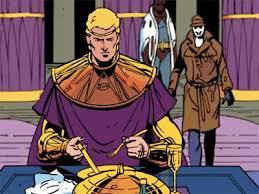
So first things first, what’s with the Egyptian imagery? Well Ozymandias is actually the given name for the historical figure known as Alexander the Great, whom Adrian feels a strong kinship towards. It also ties into Adrian’s personality and goals. Obviously there’s the obscene wealth and ridiculously self indulgent architecture, but also the ancient belief that the pharaohs of Ancient Egypt were intermediaries between the gods and mortals. This is important because it gives us an insight into how Adrian views himself and the world around him. Because of his intellect and his wealth, he views himself as being above humanity and only he knows how best to fix the world. However, in the process, he reduces ordinary people to mere statistics. Killing millions of people in one city will bring about world peace and prosperity for the other billions of people around the globe. This line of thinking is called utilitarianism, which basically means that the ends justify the means. Now of course all the characters in Watchmen display elements of utilitarian thinking, but Adrian takes it a step further, applying his own morality to a global scale. It’s scary on a number of levels, but what makes it so frightening for me is what the character of Ozymandias says about other capitalist superheroes like Batman, Green Arrow and Iron Man.
Rich white men becoming costumed vigilantes is nothing new of course. Batman was one of the first comic book superheroes ever conceived after all. But very rarely do we get to see or explore the political and social implications of a superhero being a member of the one percent. If you think about it, ultra rich men putting on costumes and beating up often working class criminals is quite disturbing. Especially when you consider the kinds of things the mega rich get away with in the real world. Money gives you influence and influence gives you power. Costumed crime fighting is in itself an exercise of power over those deemed immoral, but for the capitalist superhero it’s also power over the impoverished and dispossessed. Class privilege in action. This is something that’s hardly ever touched upon in comics. Okay Iron Man comes the closest at points as he was initially created to critique industrialists and war profiteers, and the Civil War storyline paints him in a very ugly light as the Superhuman Registration Act imposed by the government reveals a strong wealth and class divide within the superhero community, but other than that the conversation is usually swept under the rug.
DC Comics are quick to point out how Batman and Green Arrow aren’t like those rich white men. Look, they’re donating money to orphanages and helping the homeless! They’re nice capitalists! We like those capitalists! As for Marvel, there’s a line even they won’t cross regarding the politics of Iron Man and other such superheroes in their canon. They’re more than happy to discuss how making weapons of mass destruction is bad, but you’ll never see them get too specific. You’ll never see them condemn the American military and the role they’ve played in the destabilisation of the Middle East, nor will you ever see them outright address the distinct possibility that Tony Stark is in fact Republican. This is why I often find the accusation of publishers and movie studios having a quote/unquote ‘political agenda’ so baffling because the truth is they have no agenda other than to make money. Marvel and DC are businesses. They’ll never risk taking a firm stance either way for fear that it will alienate a certain group of readers and lose them sales. But by dodging and skirting around the conversation, the two companies have created an archetype that feels incredibly disingenuous, which is what Watchmen seeks to expose with Ozymandias.
The question is can someone who is ultra rich and influential possibly be heroic? This is something that was briefly touched upon back in A Brother To Dragons with Nite Owl. Dan spent his dad’s inheritance on costumes and gadgets for his superhero alter ego when surely it would have been better to donate the money to charity or something if he truly wanted to help his community. But that’s not what Dan wants. Not really. He just wants to indulge in his own power fantasy. Adrian takes that one step further. He has more money than Dan. Exponentially more. And it can be argued he’s done good things for his community, such as creating renewable energy. However, just like with Dan, the reasoning behind his plot isn’t really down to wanting to help others, but rather as a way of having the ultimate power fantasy. To be seen to be saving the world.
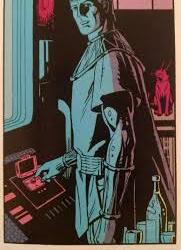
Everything Adrian does is less to do with helping others and more to do with displaying his own power and influence. Don’t get me wrong. I believe that he believes he’s doing the right thing, but if you really scrutinise his actions, his motivations feel far more self serving than he would care to admit. Tricking the world into believing they’re being invaded by an outside force is one thing, but taking the trouble to kidnap multiple scientists, writers and artists in order to create a fake alien seems like overkill. It’s ego driven. If you think about it, a bomb would have done. But Adrian wanted something spectacular. Something memorable. Just look at his decor. He built an entire Egyptian temple and biodome in Antarctica. Why? There’s no reason other than for his own self aggrandisement. It’s a display of his power.
Then there’s his actions regarding the Comedian, Rorschach and Doctor Manhattan. He wanted to get rid of witnesses. Understandable. But why beat the Comedian up so savagely, chucking him from his penthouse window, when he could just as easily have dispatched him with a single gunshot like he did with Moloch? Could it be that silencing the Comedian was less about self preservation and more about Adrian demonstrating his superiority over Nixon’s lap dog? Same goes for Rorschach. Again, he could have just killed him. Would have been much simpler. Instead he frames him for Moloch’s murder. It’s not enough to get rid of Rorschach. He wants the satisfaction of outwitting this right wing sociopath. The manipulation of Doctor Manhattan is self explanatory. Tricking a god into leaving the planet must have been quite the ego boost. And then there’s the fake assassination attempt in Fearful Symmetry. Adrian wanted to deflect suspicion away from him, but like with the alien, he wanted something spectacular. Something memorable.
Every single thing Adrian Veidt does throughout the graphic novel has some sort of egotistical agenda behind it. Even his ultimate plot to stop World War Three and unite the world isn’t about the greater good. It’s about him overcoming his own feelings of powerlessness. Because up until now the one thing he was unable to control with all his wealth and influence was the nukes. Now he’s managed even that. He has succeeded where Alexander the Great failed. He is truly the King of kings.
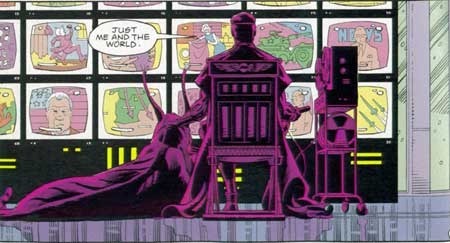
While not as over the top as this, we’ve seen this kind of behaviour so many times before by members of the quote/unquote liberal elite. Bill Gates, JK Rowling, Joss Whedon, Elon Musk and many more. Wealthy people of influence who are more concerned with looking progressive than actually being progressive. They perform charitable acts not out of a genuine desire to help others, but in order to be seen to be charitable. This is Ozymandias. Like I said, I believe that he believes he’s doing the right thing, but for me I think he’s more interested in being seen to have saved the world rather than actually doing something to truly help bridge the divide between nations. In some ways, he represents superheroes as a whole within Watchmen. Men and women more concerned with the attention and power being a superhero brings than actually helping their community. And just as a superhero alter ego allows the characters to see themselves as being above others, so too does wealth allow Adrian to see himself as being above the world.
This is why it was so important to see all the supporting characters. The news vendor, the kid reading the Black Freighter, Joey and her lesbian partner, Doctor Malcolm Long and his wife, and the two police detectives. To remind us that these are real people’s lives these characters are toying around with here. And it’s genuinely unnerving seeing all these people we’ve come to know over the course of the graphic novel be completely obliterated.
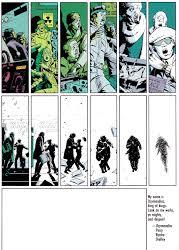
16 notes
·
View notes
Note
Oh fuck i saw it 2! I was SHOOK!! Im so ready to know what you think of the movie overall, spoilers and all
I made a snapchat of my thoughts but this review will be more condensed lol. Got a lot to say so I’m gonna do non-spoilers and then spoilers under the cut. Off the bat, for those not interested in reading a lot, I rate this movie a solid 5/10. Not the worst but not the best by any stretch.
NON-SPOILERS PROS:
That opening scene that was lifted directly from the books really hit me hard. I had been told about it ahead of time about it but seeing it play out on screen. Awful (but in a good way. the way it’s suppose to make you feel).
The whole cast was on point. Both new and old. I really felt something for the kids, even BILL (crazy i know right?). Henry’s adult part was good for what he was given.
I like that we didn’t have to see any sex scenes and that for a horror movie + considering what we were force to witness in IT (2017) Adult!Bev wasn’t overtly sexualized.
All the call backs to the book and miniseries was nice + how they had original Ben from the miniseries in the meeting room when we first meet new Adult!Ben was really fun. (kiss me fat boy)
More on screen deaths than the first one classic.
Henry’s go with it attitude is very inline with his characterization in the book so I guess that’s nice
Mike vc: I love you
Everything Mike. CHILD MIKE! SUNSHINE BOY!
NON-SPOILERS CONS:
All things Henry Bowers. [more in spoilers section].
Too many jokes that didn’t all land.
They did Mike Hanlon wrong. I’m convince the only reason he got more adult screen time is because the novel forced Andy to do so. If Mike hadn’t stayed in Derry and been the driving force for stopping IT, then Andy would have cut even more of Mike’s screen time for some more Bill Pity Party Time.
BILL PITY PARTY TIME. ENOUGH.
Relied too heavily on jump scares + very formulaic when it came to the horror elements
Hated the ending
SPOILER PROS:
Teen!Henry getting CLOCKED right in the face. Like dayum.
I thought that kid was going to survive but nope. Andy really had him die like that and that was a gutsy move.
That’s it.
SPOILER CONS:
Mike Hanlon was done so dirty. None of the Losers Club are perfect bt I really hate how they made Mike be the one to betray their trust and it was up to Bill to save the day by thinking of a solution. ALSO why did we get hour long flashbacks of Bev and Bill’s past selves (that we already seen enough of in the first movie) yet all we got was a five second clip of Mike’s background? He doesn’t even do anything. He just looks sad while others talk crap about him.
We don’t even get a jump scare for his flash back! OR get to see him collect his token. WHAT THE HECK ANDY? I’ll kill you??
Stan’s letter.
I get it and I think it’s sweet and it got to me… but it doesn’t make any sense. If he was going to kill himself anyways, why not go to meet his friends one last time and then do it? I understand in the novel the fear of IT is too strong but don’t give me this bs that he was actually doing the gang a favor by killing himself. If he’s going to put this much forethought into his suicide at least have him meet the friends he claims to care so much about.
Bill and Bev didn’t have sex.
Don’t get me wrong. SO glad I didn’t have to watch that. But it takes away from the hate fest I have going on for Bill and that’s a bummer. In a similar vain: child bill is chill. You know what watching this movie really got me on board with whatever child bill did because he was just a child and it makes sense. Adult!Bill can eat a dick.
Shut up about your dead brother Bill! You sound like Batman!
Henry Bowers.
HEnry ‘wolf man’ bOweRS.
He should have been scared of IT.
that trailer really had me going. ngl. I thought Henry was losing his damn mind about the balloons because he was scared for his life
@pennywise-fucker made a point that because IT has been nothing but helpful to this version of Henry that maybe it makes more sense for this Henry to be more excited than scared of IT
and that’s fair
but I hate it. i hate it so much.
No mention of signs of abuse at Juniper Hill.
No apologizes towards Belch Vic or even Patrick
LIKE MY GOODNESS.
Strip him of all his human qualities why don’t you. Take away the fact that he was traumatized and remorseful about his actions because heaven forbid we have some depth in this character
He should have played a bigger part. The fact that he was not only killed off so easily but all the jokes about him made any tension of seeing him on screen dissolve was a joke in itself.
Dude pulled a knife out of his chest like it was nothing.
what was up with that?
NO blood
No agony.
just lol gonna blow a kiss at ben bc wow he grew up hot
He didn’t weaken Eddie or Mike or advance the plot in any way that it couldn’t have already advance without him so what was the point of even having him in the movie?
Should have died in that well.
Eddie’s death.
Could have been done so much better. Like what the hell? He fell into the trope AND it wasn’t even a good one.
I get he has to die but Andy could have made it where his death was the result of a sacrifice or even collateral. Not because he was too busy doing a victory dance and didn’t think this monster could still use it’s limbs.
Why didn’t the Losers Club buy a gun?
THEY’RE ALL ADULTS NOW. WHY DID NONE OF THEM THINK TO BUY A GUN?? OR SHOW UP TO FIGHT PENNYWISE WITH ANY TYPE OF WEAPON OTHER THAN ONE RUSTY FENCE POST!
WHY DIDN’T HENRY GET A GUN??
PENNYWISE YOU STUPID FUCKER
What the heck was with that ending?
There was so much lamp shading about endings and how no one liked the original ending and it was time for a change but the new ending wasn’t any better??
They defeat Pennywise by hurling insults at him??? And not even good insults. Like they just scream CLOWN CLOWN CLOWN! We know for a fact that these people know how to really beat a person down in size. We see them do it with Henry. So why are they only screaming CLOWN at Pennywise? And why is that working???
The fact they’re able to keep their memories is a cop out and dumb but that’s a personal opinion bc i’m a sourpuss.
#Anonymous#thanks for waiting i had a lot to say#LT#Replies#IT Chapter 2 Spoilers#IT 2 Spoilers#it chapter 2
30 notes
·
View notes
Text
Hans’ possible Redemption Arc PART 1: Deconstructing Hans' character
Hey, guys! So this is my first post analysis, meta, observation, whatever you wanna call it, so if it’s seems incomplete or lacks of depth please add your opinions as well! Also English is not my first language but argentine Spanish, papá, so don’t judge me plz. I don’t want to encounter with any anti or hater, and if you have the necessity to speak your mind anyways, do it but in a cordial way.
I’m going to divide this post in 3 parts I think, since is very long, and I have a lot to say for my favorite Jerk redhead Prince 😆
Ok, let’s start, shall we?
_________________________________________
1) Is he really a sociopath?
You know, this is something that upsets me quite a bit. The fact that you can just say “Oh well, he’s a sociopath so he’s manipulative and lacks of empathy” is something that annoys me a little, or at the very least, disappoints me. TBH, you don’t need to be a sociopath (a psychological and mental condition) to be manipulative, apathetic or cruel. I’m trying not to rationalize his actions in Frozen, because he still was wrong by harming two innocent women, but by saying that he’s a sociopath it makes his character a little more… shallow? Simpler? My point is, that a shitty toxic person can be anyone, and it simplifies the complexity that they brought on the table on the first place.
But the questions still remains, is he truly a sociopath?

Is tricky, since we know nothing except that his family is shit, and that he is a chameleon, a mirror to other people. By the end of the movie, and by the interviews that Jennifer Lee gave to us, it seems to me that he does have sociopathic traits, but he is not a sociopath per se. Hans can be a sociopath, as much as he could be not, if it’s given a proper character in-depth and backstory.
I think that by calling Hans a sociopath is an easy way to make the GA and the Frozen Fandom to disconnect with him since statistically we have normal-functioning brain, and because people with ASPD diagnose have a negative -though justified most of the time- stigma surrounding them.
2) Grey Morality: The line between good and bad, where we all fall.
“All it takes is one bad day to reduce the sanest man alive to lunacy. That's how far the world is from where I am. Just one bad day.” ― Alan Moore, Batman: The Killing Joke.
As I said before, I like the idea of a morally questionable prince. A more grounded, realistic, game of throne-like character as Hans is. What I don’t like, is the seemingly automatic white to black view that we have for Hans, while at the same time, we have one of our protagonist letting almost die a whole kingdom, and her sister, to escape her duties and crippling fears –unintentionally, but still-. An empath or normal person can commit crime or bad things given in extremes situations of distress, anger, etc. And we see that with our own eyes in Elsa. She almost gets tempted to kill two men, you can see the fury in her eyes, in her face.
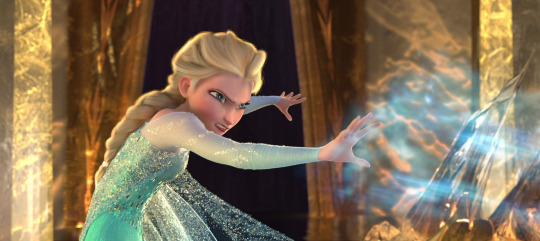
It is self defense, yes. But regardless of that, her people knew nothing about her powers and they just knew that she cursed them and ran away. No matter how morally wrong Hans was by trying to kill Elsa, or letting Anna die, he also helped her. He helped them both.
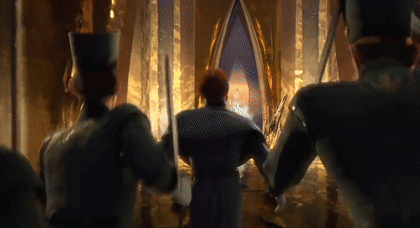
If she indeed killed those men here, I don’t think anyone whould’ve ever trusted her. Not even her own men, whom remember, they witnessed her actions and they were attacked too.
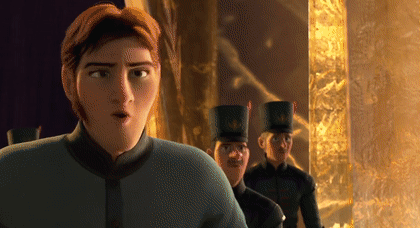
A normal person lies. A normal person manipulates. Heck, we even can choose to not feel empathy if it is inconvenient for ourselves. How many times did you pretend to feel empathy for someone just to make them feel comfortable? How many times did you see a homeless person asking for a money and you just walked away?
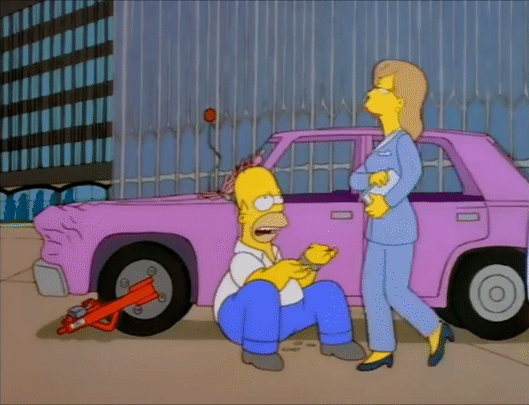
Again, I’m not trying to normalize these negative traits, but to be sincere about it. And is something that makes us very complex as human beings, we are true neutrals, and we can be good or bad, depending of the actions taken at certain moments, and how it impacts to others.
Yes, some people are irredeemable monsters, but I don’t think that’s Hans’ case. And so he does have redeemable qualities as well, even if it might be for personal gain, or perhaps some of his actions were genuine, we don’t know for sure.
When did we not see an ambiguous morality in Frozen? Or when did we not see ambiguous morality in some Disney characters, in general? Is hard to find, but we do certainly have our morally wrong characters redeemed. Here are a few:
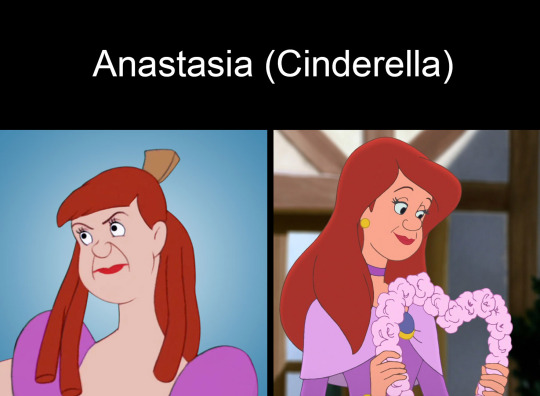
- Abused both physically and psychologically Cinderella. CURRENT STATE: Redeemed.
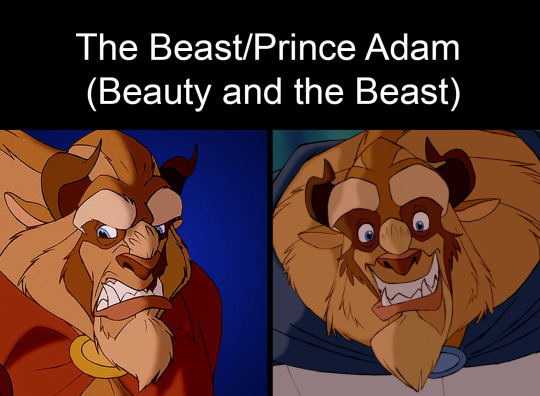
-Imprisoned Belle. -Verbally violent towards his subjects and Belle. -Almost harms physically Belle. CURRENT STATE: Redeemed.
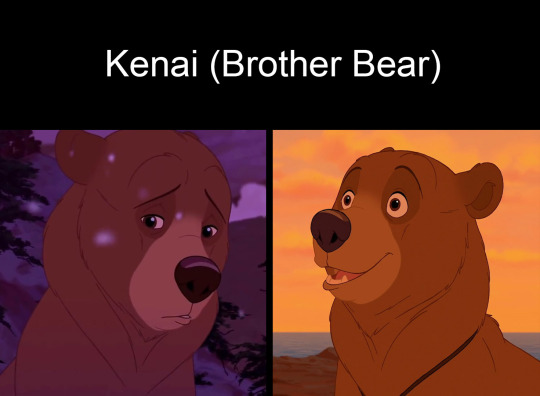
-Killed a bear out of vengeance. -Let motherless a bear cub, that after he would befriend. CURRENT STATE: Redeemed.
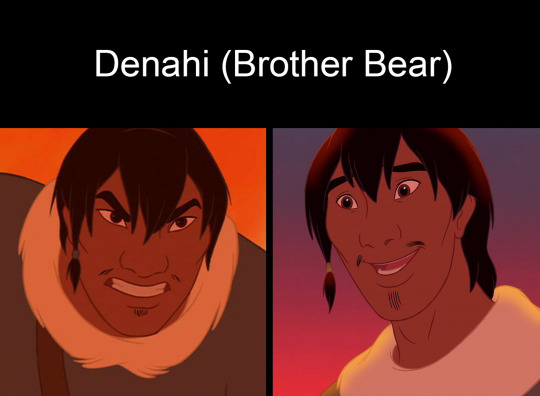
-Almost kill a bear out of vengeance too. On top of that, was his own brother (though he didn’t know). CURRENT STATE: Redeemed.
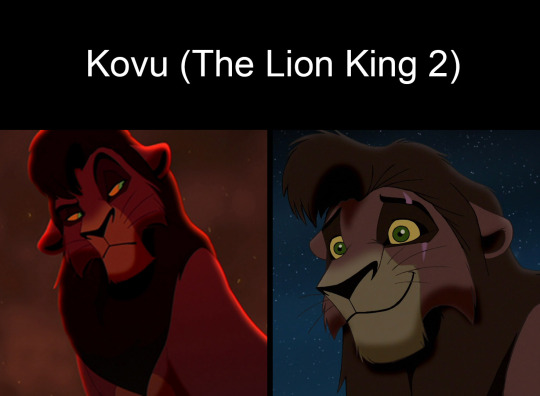
-Tried to kill Simba and take his pride. -(invoked) Forced mating with Kiara. -Almost attacks Simba. CURRENT STATE: Redeemed.
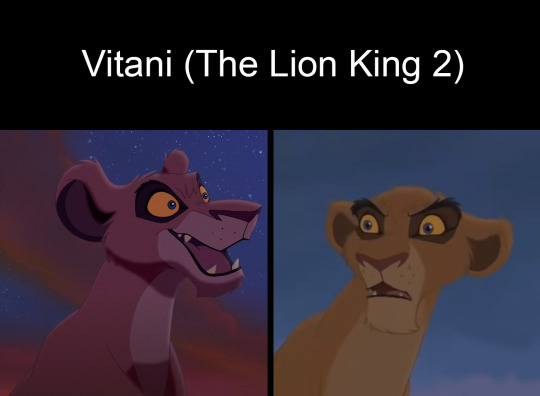
-Tried to kill Simba. -Attacked the lionesses of his pride. CURRENT STATE: Redeemed.

-He was an asshole to everyone. -He ordered a guard to throw an old man through a window (still lol). -He tried to let homeless a whole village for his selfish desires. -He betrayed Pacha’s trust. -He let Pacha on his own fate (probably to die). CURRENT STATE: Redeemed.
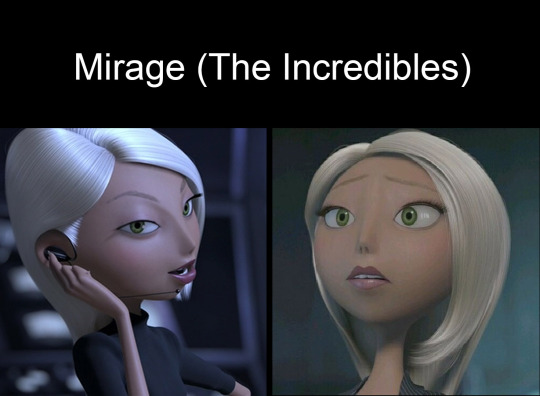
-Along with Syndrome, she plotted the death of many superheros, including Mr. Incredible. -Almost kill Mr. Incredible. -She almost kill a whole family, including the children. CURRENT STATE: Redeemed.

-He tried to kill Elsa, and let Anna die alone for personal gain. -Deceived Anna, Elsa and everyone else. -Plotted the death of Elsa at some point in the movie (unclear when exactly). -Degraded verbaly Anna. -He tried to break Elsa’s heart to make her give up her life. Redeemable Qualities: -He took care of Arendelle while Elsa and Anna were gone (though, it still can be interpreted as gaining popularity). -He went off to look out for Anna. -He ordered the Arendelle guards and the Merchant’s not to harm Elsa. -He calmed Elsa’s rage, avoiding her to kill. -He tried to reason with her.
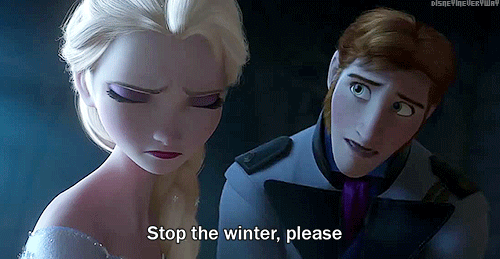
Elsa is shown that suffers of guilt and insecurities, yet throughout the majority of the movie, she still rejects Anna and her responsibilities as Queen. Even to a point where she witnesses hurting Anna with her magic,
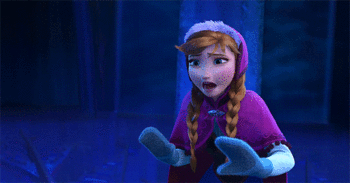
yet she just casts her away from her Ice Castle. Or after the misery that she caused -and she’s visibly hurt by that- she’s still thinking of running away, instead of trying to change things. Hans pleaded her to stop the winter and bring back summer, but she said that she couldn’t.
My goal here is not victim-blaming. I’m not blaming Elsa for her insecurities or self-defense actions. But her character at the end of the film, has a lazy realization, and for me, an unsatisfactory conclusion in terms of story-telling, because we never she her develop for herself, or working hard to balance her bad actions throughout the end of the movie, but anyway.
I’m not trying to rationalize morally questionable/wrong actions either. A good action doesn’t cancel the bad one, but my main interest is to analyze the human psyche, character growth and development.
3) Love and Fear: a constant subject in Frozen, and a constant subject for a “Prince”.
So cut through the heart, cold and clear Strike for love and strike for fear See the beauty, sharp and sheer Split the ice apart, and break the frozen heart.
—Disney’s Frozen “Heart”
DID HANS ACT ONLY OUT OF COLD AMBITION, OR HE WAS ALSO AFRAID?
For what we know from A Frozen Heart, interviews and extra information, is that Hans is abused so much by his brothers, that he just accepted their behavior and doesn’t fight back, is something normal for him. Nor he tries to improve his relationship with them. His relationship with his father is also painfully cold and toxic, and their dynamics are comparable to Zuko and Ozai, Tyrion and Tywin, or Theon and Balon. Hans seems to have an inferiority-superiority complex, and so, his pride is fragile and as well (just as previous Zuko, Theon and Tyrion).
But how? He’s very charming, and his body language never shows signals of insecurity (though that’s debatable). Or when he confesses his true intentions to Anna he has a sexy smug smile in his face, and his voice is soft and low, cruel and never trembling. How is that I believe that he was afraid or scared? Well, the movie itself states that he does have a terrible relationship with his brothers, the novelizations extends this to his father.
So by knowing this, a person copes with the pain and abuse in different ways: Elsa’s fear is hurting her loved ones, so she forced herself to an emotional -and literal- isolation towards them, specially with Anna. In Hans’ case, his fears are being trapped forever in his “home”, and being rejected by his father. So his way to acclimatizing himself in such negative environment, is to avoid his true feelings and morality. Avoiding his true identity, in essence. Thus, becoming into the Mirror Hans (more on that later), allowing him to become the very thing that he actively tried to avoid for years.
I think that here’s the point where he started to panic; where the fear of going back to his depressive life, and the taste of power that Anna gave him when she left him in charge, took him over completely, forcing himself to toss apart any bit of true morality and compassion that he had for Anna and Elsa. Where his mind started to realize that executing Elsa was the only way to bring things back to normal.
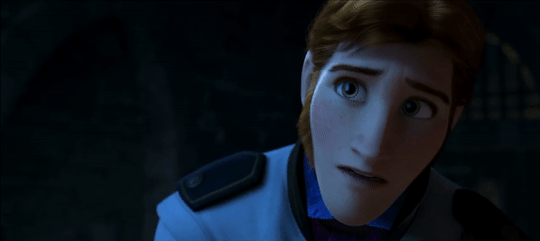
But is also the fact that Anna dissapeared, and Elsa was the only rightful heir to Arendelle, so his conflict was “What do I do? What’s next?” If Hans decided at the moment to execute her, and Anna was dissapeared, he wouldn’t get to be King of Arendelle, and he would back to his hell home. His conflict is both emotional and materialistic, and fear started to get under his skin too. Some might argue that he’s just reflecting Elsa’s emotions, which is valid, but keep in mind his goals, his backstory; try to read him beyond what the movie told you. Link the dots to picture his mind.
Some other might point out this scene.
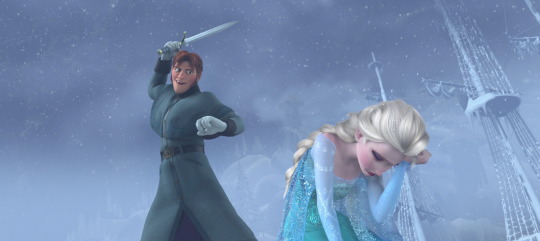
[SIDENOTE: To me, it seems like another atempt to make us dislike him more. In my eyes, is like that the creators tried to manipulate us to hate him, but anyway don’t mind my defensiveness towards him LOL. He’s a terrible person Angie! Stop it, goddamit!]
It interpreted this part as Hans joy of finally seeing the chance of escaping his prisonic home, dehumanizing Elsa completly. WHICH IS BAD regardless. Is he a sadist? The book implies that he takes pleasure in feeling physical pain, but he does not take pleasure on harming others.
So to me, is a smile of almost getting to win a big bad in a videogame, or well... that’s the type of face when I’m about to eat a pizza so, IDK :v 🤷♀️
THE MACHIAVELLIAN KING VS THE MACHIAVELLIAN PRINCE: The Lion and the Fox.
One of the reasons that Hans didn’t fit his family -besides being the smaller and weaker member of them-, is that his morale and philosophy clashed with the imposing, hard power that his father values. Being flexible and benevolent to the common people is a sign of weakness for Hans’ father and brothers. The king sees himself and his other sons as strong and powerful as lions, and he compares Hans to a mouse because he doesn’t fight back, nor shares his value of hard power. The King’s philosophy is kinda like Darwinism with Machiavellian shades. So in one side, we have the cruel side of the Machiavellian philosophy, the one that values fear over love:
“From this arises the question whether it is better to be loved rather than feared, or feared rather than loved. It might perhaps be answered that we should wish to be both: but since love and fear can hardly exist together, if we must choose between them, it is far safer to be feared than loved.”
“One can say this in general of men: they are ungrateful, disloyal, insincere and deceitful, timid of danger and avid of profit...Love is a bond of obligation that these miserable creatures break whenever it suits them to do so; but fear holds them fast by a dread of punishment that never passes.”
But in Hans’ side, he believes (or puts in practice, at least) that appearances and benevolent acts are better way to influence people, to gain more popularity. This is the softer side of power, the more deceitful and diplomatic Machiavellian route:
“Everyone sees what you appear to be, few experience what you really are.”
“Never attempt to win by force what can be won by deception.”
“Therefore it is unnecessary for a prince to have all the good qualities I have enumerated, but it is very necessary to appear to have them. And I shall dare to say this also, that to have them and always to observe them is injurious, and that to appear to have them is useful; to appear merciful, faithful, humane, religious, upright, and to be so, but with a mind so framed that should you require not to be so, you may be able and know how to change to the opposite.”
So we see the two opposing sides of the Machiavellian philosophy, one relies on hard power, and the other in subtle power. In essence, Hans’ father rejects the soft power because of his imposing pride and ego. But both characters share the same Machiavellian influence in their beliefs, the only difference is that Hans takes no joy in being cruel and tyrannical, thus preferring the softer, more subtle side of power.
Yet at the end of the day, he embraces the cruelty, and fails to become the hero he expected to become, and by the time he realizes his mistakes and regains his morality, is too late.
What I’d like to see in Hans’ Redemption Arc, is a discussion between the characters (mainly Hans and Elsa) about this matter. An intellectual battle, and him realizing that his father was wrong. Not so in-your-face, because I can see people getting bored over political philosophy, but in a metaphorical way. And Hans coming in terms that deceitfulness and fear, aren’t the only way to gain trust, but love and true friendship as well.
He can be a fox, and a lion too.
“The lion cannot protect himself from traps, and the fox cannot defend himself from wolves. One must therefore be a fox to recognize traps, and a lion to frighten wolves.”
― Niccolò Machiavelli, The Prince
Part 2 Here
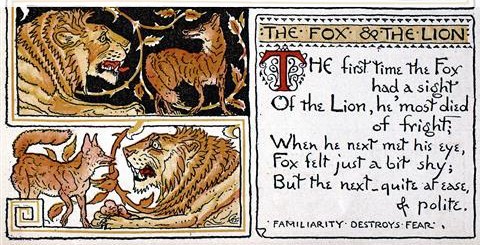
#disney#disney meta#frozen#frozen meta#frozen fandom#prince hans#hans#redeem hans#niccolo machiavelli#the prince#elsa#anna#disney villains#disney princes#redeemed villains
95 notes
·
View notes
Text
#1 comes from how every fallen Jedi in the films turns to the Sith. I'd argue that most people act more like any non-Sith is a Jedi by default, but it's equally inaccurate either way...if you're familiar with the peripheral materials.
#2 comes from a certain way of thinking about the world, the kind of guy who thinks Steven Universe is dumb and Batman should act like The Punisher. I look forward to when that kind of guy stops being so prevalent.
#3 comes from the Prequel Trilogy. The Prequel Trilogy is very clear that Jedi think all emotions are bad, whether or not that was the intent; other trilogies can be interpreted more reasonably, but also work within the firmer prequel framework. (And there are some specific lines, like Obi-Wan's ghost telling Luke not to practice self-control, but to "Bury your feelings deep down".)
And while Anakin is at time asked to show basic levels of self-control, at other times the text is much stricter. For instance, Yoda and the council don't want him to become a Jedi because missing his mother is too much emotion for a Jedi trainee. (Anakin is nine years old.) Yoda tells Anakin that fearing for his mother's life is a direct path to the Dark Side, and that he needs to rejoice in her death.
Pop Culture Detective goes into more detail about what the prequel Jedi say about love and feelings in this video.
The other #3 is just people idolizing Mandalorians because military cultures are badass or something. People idolize f*king Sparta, and it was something like 85% slaves. Similar kind of guy to #2.
#4 comes, again, from the prequels. Anakin says the Jedi forbid attachment, in a conversation that entangles love and attachment. Yoda says that Anakin should not be attached to people, in response to Anakin worrying about his mother's imminent death. Anakin isn't being possessive of his mom, he's worried about her.
I think part of the problem is Lucas poorly explaining his poor understanding/loose adaptation of Buddhist philosophy. But another part might just be that he thought he was writing Anakin as more of a control freak than he actually was. If Anakin was trying to control his mother, it would be good to let her go. But he's not—he just doesn't want her to get shot.
#5 comes from the fact that the Jedi Order is (sometimes, usually unintentionally) written as being conservative, hidebound, and callous to the needs of its members and other people. Low-hanging fruit: I don't think George Lucas intended for the Jedi to condone slavery, but the way Qui-Gon and Obi-Wan act in Episode 1 suggests they do. I don't care if Jedi traditions are as old as the universe itself—the ones that inflict needless suffering on people should change!
#6 probably comes from Anakin stans. People will make up all sort of sh*t to glorify a character they like.
#7 is one of those claims where we don't have the specific kinds of details which would let us analyze it properly. The idea of a ten-year-old cloned human having the same emotional maturity as a normal 20-year-old is the kind of thing that I don't expect everyone to accept on principle; it sounds an awful lot like an excuse someone would make up to justify abusing a big fifth grader.
I don't think you're wrong, but I wouldn't get in an argument on the subject.
No idea where #8 comes from. Though I'm not sure why being a professional and a mentor is incompatible with practicing poor self-care...
TL;DR: Star Wars is a vast property, and some dumb stuff has been said. Some nuance and consideration has also been added, but mostly in the novels, RPGs, and so forth—media which has the time to explore those ideas in more depth, but which fewer people are going to the experience.
I harp on the prequels not just because they portray the Jedi Order as pretty much the worst version of themselves, but because they formed the foundation of what Star Wars is to an entire generation. Books where Jedi masters spend pages discussing the finer points of Jedi philosophy as they relate to this week's superweapon or whatever provide the most complete picture of Jedi philosophy, but the fragments written into the major films are the more important.
Also, some people just really like the idea of a society optimized for war.
Star Wars takes I’m sick of seeing:
1. When a Jedi chooses to no longer follow the path of a Jedi, they are automatically a Sith. That’s like saying if you are no longer a practicing Jew, you’re automatically a Catholic. Being a Sith has a specific set of beliefs and doctrines that must be followed, the same as being a Jedi. One can choose to no longer be a Jedi and *not* be evil or Fallen in any way, shape, or form, and this does not make them a bad person.
2. That if the Jedi were just a bit more Mandalorian, it would have Solved All Their Problems and prevented Anakin from Falling. Usually this means that if the Jedi just showed more emotion/weren’t emotionally repressed/if Obi-Wan just told Anakin he loved him/was proud of him, Anakin wouldn’t have made the decision on multiple occasions to slaughter children. There are so many “fix it” fics where this is the underlying theme.
3. Likewise, the Jedi repress their emotions. The Jedi teach their students to be *mindful* of their emotions, to not react based on a person’s first initial knee jerk response. They asked Anakin to have the same level of emotional control as a kindergartener–you don’t get to punch someone because they took your favorite toy and broke it.
3. When Mandalorians adopt children (with or without parental permission) and indoctrinate them into their culture of weaponry and violence, it’s cute; when the Jedi adopt children (usually with parental permission) and teach them to control their emotions and their psychic powers based on those emotions, they’re an evil child-snatching cult. Only the Mandalorians are capable of forming a family bond and despite being communally raised, the Jedi are incapable of forming those same bonds, probably because of all that emotional repression. But if you violate the rules of the Mandalorians, you are cast out of said “family”, whereas even someone like Darth Vader was offered a way home.
4. Love = Attachment. Attachment is about greed and possession. We are told *and* shown on multiple occasions that you can love someone and let them go. Obi-Wan does it multiple times. But when you go beyond love, when you refuse to accept loss, whether it’s external like death or internal like someone choosing to leave you, that’s when you move into Attachment, and *that* is what leads to the Dark side.
ETA, because apparently I wasn’t done:
5. The Jedi Order, which has existed for tens of thousands of years, should change everything about itself and its doctrines to suit one kid who doesn’t actually care about following other people’s rules in any circumstance.
6. Anakin Skywalker is the only Jedi who ever treated the clones like Real People, despite several blatant examples showing otherwise, and the fact that he was totally chill with them having their identities and free will stripped away from them. But because he was the only one who was Raised By A Real Mother, he’s the only one capable of showing compassion to other people.
7. That because they have accelerated aging, this makes the clones child soldiers. If they were completely non-human, no one would blink an eye at the idea of a species maturing at a different rate than humans. So they’ve only been alive for ten years? That does not make them children. Grogu has been alive for over 50 years and he’s still a toddler. Calling them children is infantilizing and demeaning.
8. Listen, I love whumping on Obi-Wan as much as the next fangirl, but I’m kinda getting tired of the whole “Obi-Wan never goes to medical/doesn’t sleep/doesn’t remember to eat” thing. He raised a whole ass padawan to adulthood. We have never actually seen him deny himself medical care, sleep, or food. He might work longer hours during the war, but so does everyone else. And the only reason I can justify him not eating isn’t because he “forgets” so much as the poor guy probably has a terrible case of decision fatigue. If all he has to do is walk to the chow hall and get served what everyone else is being served, I don’t think he’d have that much of a problem. There are, of course, extenuating circumstances to all of these based on any prior trauma he may or may not have, but otherwise it’s infantilizing.
This post is brought to you in part by fandom as well as interacting with members of the Star Wars costuming groups.
2K notes
·
View notes
Note
Since you just announced it on Twitter, what did you think of Kraven’s Last Hunt?
May not be contemporary in the broader sense, but I suppose it’s contemporary for me, and that’s good enough. Short answer: I liked it quite a bit and like it more the longer I sit on it.

On a certain conceptual level, this initially reminded me of Dark Phoenix Saga, in that like that I felt (as reinforced by DeMatteis originally conceiving of this as Wonder Man and then Batman stories) this was a template that could have fit for essentially any character that simply happened to be attached to this one, albeit benefiting from Spider-Man’s vulnerability, and with the critical difference that it’s good. A very different manner of good from the other Very Good Major Comics Of 1986-1987, all symbol and emotion and impressionistic interpretations of what’s in theory a rather straightforward - if necessarily intense and intimate - supervillain plot to humiliate and break a superhero. And Zeck walks that fine line of solid, tangible ‘realism’ and stylized, frenetic, overblown excess necessary for a book this simultaneously ground-level and psychedelic; a perfect Spider-Man artist, when I put it like that. There are elements that necessarily eluded me on Kraven’s end, lacking as I am in a meaningful grounding in either the Russian Revolution or the works of William Blake, but at the end of the day they’re simply incredibly good, even if the nature of its incarnation was something of happenstance.
But the truth is, that this project ended up a Spider-Man story is crucial to how it ultimately works, far beyond Peter’s inherent ability to rightfully freak the fuck out at his circumstances in a way Bruce Wayne could never entirely pull off (though that element, and how well it works here, really does make this the genesis of the particular breed of Serious Spider-Man Stories that I’ve always loved, even as I know they shouldn’t constitute Pete’s bread and butter). As an artifact unto itself, as a singular ‘graphic novel’ thesis on Parker, it’s the ultimate statement against, and ultimately redemption of, the concept of him as a larger-than-life figure. Kraven’s modeled his entire life around refusing to accept the humble Earthliness of things in search of a greater purpose, casting himself the noble scion of a lost kingdom of glory, turned champion against the great monsters of the world, because the alternative is that he’s a 70 year old man with likely undiagnosed mental illness who hunts down and shoots a college dropout in the face before getting in a wrestling match with an overgrown sewer rat to try and get over his midlife crisis. And he so nearly pushes Peter into that same mindset with drugs and isolation and savagery, but in the end, no; just like the supposed Vermin who stalks the corners of the piece, he’s just a dude. So profoundly just a dude that even a lifetime of pathology and self-delusion can’t stop Kraven from recognizing it in the end. Yet even as he brings his own story to an end, satisfied and unable to see another purpose in life, Sergei sees the greater truth: Peter may not have been The Spider, but Spider-Man was his Spider, just as he has been to so many others, and that battle and that story truly is something miraculous and worth taking pride in.
Outside its isolated context however, at least for me, it takes the role of climax to a greater narrative arc of Spider-Man vs. Depression. See, the form I happened to read this in was “The Amazing Spider-Man Epic Collection Vol. 17″, which also includes Amazing Spider-Man #289-292 + annuals 20 & 21, Spider-Man Versus Wolverine, and Web of Spider-Man #29-30. And what they consistently present in the unwitting leadup to this is a Peter Parker whose life isn’t rocked by constant disaster and upheaval, but is just believably shitty and mundane and empty, made up of unrewarding routines, drab surroundings and a handful of compromised half-formed relationships. He’s thinking hard about giving up as Spider-Man again, consciously wondering at one point why he isn’t happy with his life as things stand, and most of all he’s reeling from his encounter with Wolverine. An encounter that not only resulted in the death of an acquaintance, but threw him into a narrative space where he as a traditional superhero simply doesn’t function, rendered emasculated and ineffectual in the face of a very different model of superheroic realism culminating in blood on his own hands. He wanders through the aftermath in a daze, even as he primarily (and as I know you discuss on your blog Fearful Symmetry - which I’m finally reading now that I’ve read this - crucially) focuses on Ned’s loss rather than taking a life himself, his sole meaningful respite his love and ultimately marriage to* Mary Jane. But just as the haze seems to be lifting and life feels real and meaningful again, the hammer comes down when the darkness is over him again for a moment in the wake of another death, sending him spiraling into a hallucinatory nervous breakdown. It’s only by readmitting his vulnerability to himself, by holding on to the single emotional tether he’s permitted himself in his wife, and by in the end refusing to succumb to the panic and hate threatening to take him over, that he literally crawls up out of the ground twice, once out of the ground and the second time back into the light.
It’s not as good as the Kraven arc in Squirrel Girl though. But still pretty good.
* Speaking as a fan of the Spider-Marriage, and having just read it and the context around it for the first time:Holy SHIT that did not work and I don’t blame creators throwing fits behind the scenes. The annual itself is great, but in the leadup - literally the issue before the proposal - Peter and MJ are kinda unofficially seeing each other and also he’s still clearly hooking up with Black Cat. And then in one issue he decides “something feels incomplete, I should get my life as Peter sorted out” and pops the question out of fucking NOWHERE. MJ is understandably like “um???” but then accepts a couple issues later and that’s that.It’s UNBELIEVABLY weird. Not that Peter Fuckin’ Parker couldn’t do something that stupid if he’d had a bad enough time of things recently to fry his head (which he most definitely had), but that it in any way works out.
49 notes
·
View notes
Text
Novel: Absalom, Absalom!
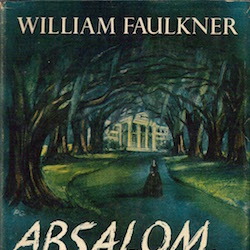
Summary In 1909 Quentin Compson of Jefferson, Mississippi, is summoned out to her house by Miss Rosa Coldfield to listen to the story of the Sutpen family, into which her sister married. Quentin later hears more of the story from his father, and he himself learns more directly on visiting the decaying Sutpen mansion with Miss Rosa. A year later he recounts the story to his roommate at Harvard, who speculates copiously on details not know and which were impossible to learn.
The story of Thomas Sutpen, when put together: The son of poor white trash in Virginia, Thomas Sutpen was as a youth insulted by a house slave and became determined to have an estate and dynasty of his own. He moved to Haiti where he married, and only too late discovered—after fathering a child by her—that his wife was part-Negro. He divorced her and moved with twenty slaves to Jefferson where he bamboozled his way into ownership of a hundred acres on which he built a great mansion. He wed Ellen Coldfield, the daughter of shopkeeper and by her fathered a daughter, Judith, and a son, Henry. He also fathered another daughter, Clytie, by a slave a girl. For all this, Sutpen never really attained respectability in the eyes of the town.
Henry Sutpen went to university where he befriended an older student, Charles Bon, and brought him back home, where it was arranged for Charles to marry Judith. Sutpen, however, realized that Charles was the son he had by his first wife; on informing Henry of this, Henry disowned his father and fled with Charles. They joined the Confederate Army on the outbreak of the War. When it was over they returned home, and at the gates of the house Henry killed Charles. It is assumed it was because Charles was determined to marry Judith despite being her half-brother and being part-Negro. Henry then ran off. Ellen Coldfield was already dead before this had happened.
Thomas Sutpen returned to his ruined plantation and tried to rebuild it. He proposed a kind of marriage to Rosa Coldfield, the much-younger sister of Ellen, who had moved in with Judith and Clytie. He proposed that he father a child by her, but only marry her if the child was a son. She naturally refused and moved back to town. Sutpen then fathered a child on the granddaughter of a squatter who lived on his land. When the child proved a girl, he disowned them both, and was promptly murdered by the squatter, who also killed his daughter and the infant before being killed by a posse.
Some years later a child that Charles had fathered on an octaroon is fetched from New Orleans by Clytie and Judith. He marries a black woman and fathers a child. Charles's son and Judith die of yellow fever, leaving Clytie and Charles's grandson the only inhabitants of the ruined house.
In 1909 Quentin and Rosa travel out to the mansion, where they discover Henry, living there four years, in an upper room waiting to die. Later, when they try to fetch him back to town, Clytie burns the house down, killing herself and Henry.
Notes At the time of its publication, Clifton Fadiman denounced Absalom, Absalom! as "a penny dreadful tricked up in fancy language and given a specious depth by the expert manipulation of a series of eccentric technical tricks."
I think there is some justice in this judgment. I'm not alone, either. Even today, when it is a feature of university literature classes, this novel is controversial among critics. The plot is a Gothic horror story that is only slowly revealed in piecemeal fashion as various narrators take their turns sketching it and coloring it in with their own perspectives; and to grasp the prose style, imagine a kudzu that's been weaponized by Batman's Poison Ivy .
And yet this isn't to say that the novel is bad or and should be dismissed. It's quite good, actually, if only it is accepted as what it is and not wished to be what it is not.
But I'm not here to pass a critical judgment, only to remark on what works very well, what works less well, and what lessons might be learned. I have only two:
1. The novel does a masterful job of parceling out only a little information at a time, and parceling it out so that we sense the disclosures coming and are not shocked to our core when they arrive. This creates suspense and stops the plot twists being to nakedly shocking when they come, while still giving us a good chill when our fears are confirmed. It would work even if the prose style weren't as dense and obscure as it often is, and a reading of Absalom, Absalom! make plain how much sheer storytelling joy there is to be had in building and delaying plot developments not by manipulating the plot but by manipulating the narrative.
2. Most of the criticisms of the prose style concentrate on the length of the sentences, the complexity of their internal structure, and the insertion of parenthetical material. These stylistic choices can and have been defended, but the greatest defect (IMO) is the relative lack of vivid, concrete words, and the superabundance of words that only exist for the sake of other words.
Here is an example of what I mean:
... probably by that time he had learned that there were three things and no more: breathing, pleasure, darkness; and without money there could be no pleasure, and without pleasure it would not even be breathing but mere protoplasmic inhale and collapse of blind unorganism in a darkness where light never began.
The meaning, if you read it carefully, is clear enough: Pleasure needs money, and breathing needs pleasure; for breathing without pleasure is not life but only a biological mechanicalness. You may say that Faulkner's original is more stylish than my paraphrase, and I will not argue. But notice how every noun in Faulkner's passage (and my own) is either abstract (thing, breathing, pleasure, money, inhale, unorganism) or abstractness dressed in metaphor (darkness, light). "Learned" is not a vivid verb, and "collapse" is another metaphor for an abstraction. Every one of those fifty-one words is either abstract or merely a connective binding those abstractions together. And so the imagination fumbles vainly for some real and vivid image in this wall of words.
Here is a passage where we do get something concrete when Faulkner describes Miss Rosa’s house:
... a dim hot airless room with the blinds all closed and fastened for forty-three summers because when she was a girl someone had believed that light and moving air carried heat and that dark was always cooler, and which (as the sun shone fuller and fuller on that side of the house) became latticed with yellow slashes full of dust motes which Quentin thought of as being flecks of the dead old dried paint itself blown inward from the scaling blinds as wind might have blown them.
This is a challenge to read, but it is easier to absorb because there are definite objects—blinds and dust motes and flecks of paint; the sun, the room, the air—colored with vivid adjectives (dim hot airless; yellow; dead old dried); and even the parenthetical remarks about light and air carrying heat refer to real things.
When Faulkner writes in this latter, as he does throughout most of Chapter Nine, the reader can move swiftly and confidently through even the longest and most maze-like sentences, because the sentences gives us real things to imagine and ways of imagining them. But when he retreats into the abstract—which he is most often does—the story is swallowed up in mere verbiage.
You can defend even this aspect of Faulkner's style by arguing that, ultimately, that is all that the narrators have—their own words to explain something that has long since vanished—and that they are as lost and uncomprehending inside their words as the reader is. And maybe you are right. But I take from it the caution that the more complex your prose style, the more you need hard, bright words that stand for things that are not words if you don't want to baffle and intimidate your readers.
Recommended
1 note
·
View note
Text
The Worm Reads: Empire of Storms, Ch 65 - 67
I want this book over and done with
The Lock had crafted the sarcophagus from the mountain itself. It had taken every ember of its power to bind Erawan within the stone, to seal him inside.
Chapter 65 opens up with Elena’s POV on how Erawan is sealed up.
When [Elena] had stolen the Lock from her father all those months ago, she had not known—had not understood —the truth depth of its power. Still did not know why he had forged it. Only that once, just once, could the Lock’s power be wielded. And that power … oh, that mighty, shattering power … it had saved them all.
Holy fragments, Batman! Holy em dashes, Batman! Was SJM typing with one hand or?
Gavin, sprawled and bloody behind her, stirred. His face was so mangled she could barely see the handsome, fierce features beneath.
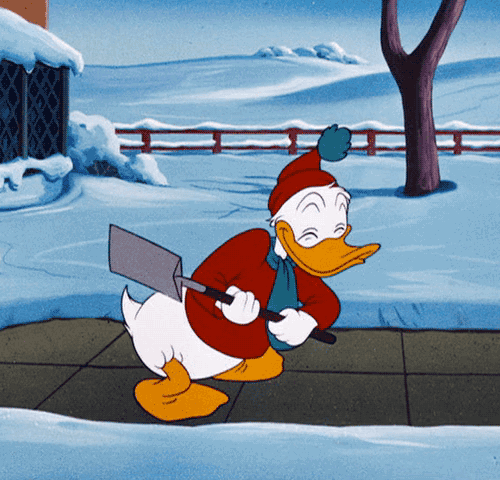
Gavin got his ass whooped by Erawan but Elena still needs to bust a nut over how hot he once was lmfaoooooo you’re killing me SJM
But even Gavin had not known what [Elena]’d been planning. What she’d stolen and harbored all these months. She did not regret it. Not when it had spared him from death. Worse.
Lmao is this an unintentional parallel to Alien and Rowboat because i am laughing Elena is punished for keeping secrets but Alien blatantly gets away with it holy fucking shit
Some spirits show up and tell Elena despite her efforts, no cigar. Erawan is gonna bust out of there eventually.
“He will rise again one day,” said the one of darkness and death. “He will awaken. You have wasted our Lock on a fool’s errand, when you could have solved all, had you only the patience and wits to understand.” “Then let him awaken,” Elena begged, her voice breaking. “Let someone else inherit this war—someone better prepared.”
I’m a sucker for conflict like this, where the older generation passes their problems onto the younger generation and the falling out from that, but sadly SJM didn’t give me any good character to inherit these problems for me to care about. Such a good concept wasted on a shitty disguise for fantasy porn.
Elena has to promise she’ll help whoever holds the Wyrdkeys next to fix the problems she made. Thanks, Elena, for making me read Alien’s shitty adventure. The scene swaps over to another memory.
The Princess of Eyllwe had been wandering the Stone Marshes for weeks, searching for answers to riddles posed a thousand years ago. Answers that might save her doomed kingdom.
Wait.....Nehemia?
Nehemia, baby, what are you doing here? Flee this shitty novel! Run my child, be free and flee to the land of actual good writing!
So Elena tells Nehemia about Alien’s destiny to save everyone (gag) and to go forth and seek out Alien to help her.
“And the price?” Elena hated them, then. Hated the gods who had demanded this. Hated herself. Hated that this was asked, all these bright lights … “You will not see Eyllwe again.”
Wow. So SJM really made a black woman’s entire character arc about dying for her precious snowflake OC, huh....SJM really out here dong Nehemia dirty like this.........
Nehemia swallowed. “Then I shall help in whatever way I can. For Erilea. And my people.”
GROSS SOBBING
NEHEMIA DESERVES SO MUCH BETTER THAN WHAT THIS SHITTY SERIES DID TO HER NEHEMIA BABY I AM SO SORRY
Chapter 66 opens with Assdion’s POV... great. Can I please see Maeve punch him in his stupid face?
Aedion Ashryver had been trained to kill men and hold a line in battle since he was old enough to lift a sword.
SJM is still attempting to get me to feel bad for Assdion. Well guess what Sarah, too little too late.
But Aedion’s duty wasn’t to remind [the soldiers] of the blunt facts. His duty was to make them willing to die, to make this fight seem utterly necessary.
Anything for your precious queen Alien, huh? Eat my ass, Assdion.
[Lysandra] had modified her sea dragon. Given it longer limbs—with prehensile thumbs. Given her tail more strength, more control.
Holy fucking shit, and I thought Alien was a Mary Sue!!! So Lysandra can not only perfectly shift into a creature she’s never seen in the flesh before, she can also modify it like it’s an RPG??? Holy fucking shit Sarah quit making all your OCs over powered!! How the fuck am I supposed to be feel any tension or fear???
Arrows fired with better accuracy than the Valg foot soldiers, shooting like those rays of sunshine into the water. [Lysandra]’d prepared for that, too. They bounced off scales of Spidersilk. Hours spent studying the material grafted onto Abraxos’s wings had taught her about it—how to change her own skin into the impenetrable fiber.
1. “rays of sunshine” the fucking imagery???? Does SJM know how words work???
2. HOLY SHIT, PULLED OUT OF YOUR ASS MUCH??? We were given no indication Lysandra had been studying Abraxos’s wings until now, what a fucking ass pull!!! If you’re going to introduce new sudden magical elements you have to show them beforehand, otherwise it looks like you wrote yourself into a corner and just farted out a solution last minute!!!!
I hate this book. I hated it before, but I really hate it. The fact that so many talented authors receive no attention but SJM’s absolute garbage dumpster fire novels that are just for porn with no other thought put into them get all this praise makes me want to jump off a bridge.
Anyways, now we’re in Dorito’s POV and SJM Dorito is splooging over how powerful Rowan is. Same old, same old.
But when Aelin found their bodies, or whatever was left of them if the sea didn’t claim them … she might very well end the world for rage. Maybe she should. Maybe this world deserved it.
I mean, if she ended the world this series would be over and I’m on board with that, but you guys have spent this entire novel fighting to protect the world from the bad guys and now suddenly when things get hard you’re like, “eh fuck it the world doesn’t deserve our help”? Wow, some heroes you guys are.
[Dorian] wished he’d had more time to talk to the witch. To get to know her beyond what his body had already learned.
I’m not touching this because it’s beyond fucking stupid and this is the moment SJM should’ve woken up and realized her precious romances have no chemistry and are simply there for porn purposes.
Anyways, surprise surprise, Rowboat’s begging actually worked and his cousins start firing at their own ships. Score one for ass pulls!
Rowan had told Enda about Aelin.
The next chapter opens up with this, and I’m honestly baffled. If Rowboat told his cousins about the selfish shitlord that is Alien, you’d think they’d be more than eager to destroy her ship. But I suppose not.
So [Rowan]’d gone, ship to ship. To the cousins he knew might listen. An act of treason—that was what he had begged them for. Treason and betrayal so great they could never go home. Their lands, their titles, would be seized or destroyed.
So why the fuck did they decide to help him?
No, I’m serious, Rowan doesn’t tell us. If I was one of his cousins and this fucker showed up after betraying our queen and begged me to risk my own life and family to save him, I’d tell him to go fuck himself.
Is SJM fucking with us on purpose? Because none of this makes any sense. They have no logical reason to help Rowan at the risk of themselves, and I’d bet every cent I ever owned Rowboat won’t lift a finger to help any of his cousins after Maeve kicks them out.
SJM is a shitty writer. She’s worse than fucking George Lucas. That’s right, I said it, don’t fucking come @ me.
Maeve wouldn’t allow it. She’d wipe the Whitethorn line off the map for this.
If Rowboat’s cousin and his lover die because of this I am going to break something.
Anyways, Rowboat and the gang start winning because of fucking course they do, and Lorcan realizes Maeve isn’t actually on any of her ships, but on the same beach Elide was ordered to wait on. Well, duh, did you really expect Maeve to be that stupid?
The chapter is over, and oh my god less then 10 chapters..... I can do this, I can do this...........
27 notes
·
View notes
Photo

For the week of 19 November 2018
Quick Bits:
Aquaman #42 is a tie-in to the “Drowned Earth” event, following on his skewering at the hands of Poseidon in Justice League #11. Navigating his way through a dead realm is kind of a weird way for Dan Abnett to close out his run on the series, but it’s still a satisfying issue. Great art from Lan Medina, Vicente Cifuentes, and Gabe Eltaeb.
| Published by DC Comics
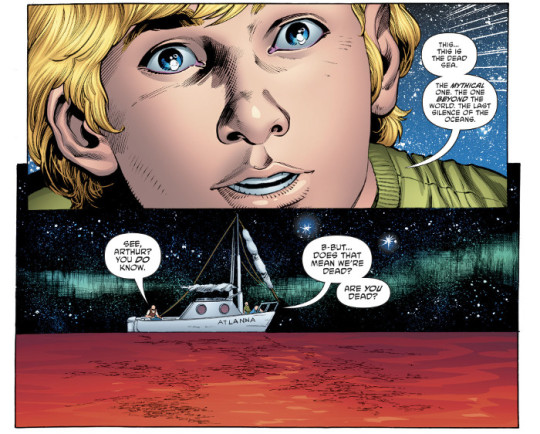
Batman #59 continues the “Tyrant Wing” arc with Batman acting a little unhinged on Penguin’s tip that Bane is running Arkham from the shadows, continuing his criminal empire to kill throughout Gotham. It’s interesting to see Batman alienate his allies again in his pursuit for vengeance.
| Published by DC Comics
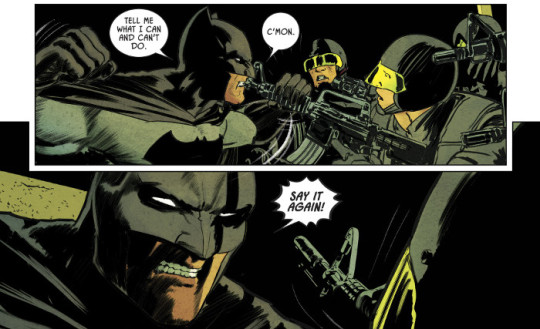
Bettie Page #1 begins a new volume setting up an alien adventure in Britain, building upon the previous series but not requiring it as reading, from David Avallone, Julius Ohta, Ellie Wright, and Taylor Esposito. Bettie Page, paranormal investigator, is still a weird but entertaining remit and this opening issue does a good job of continuing in that vein as Bettie travels to England to investigate the Queen having been abducted by aliens. Ohta’s art also just keeps getting better and better.
| Published by Dynamite
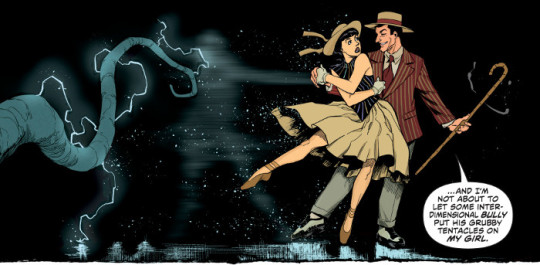
Black Badge #4 employs a unique approach to flashbacks, with a solid spot colour in otherwise black and white image from Tyler and Hilary Jenkins. It’s a neat technique that really makes the scenes stand out.
| Published by BOOM! Studios
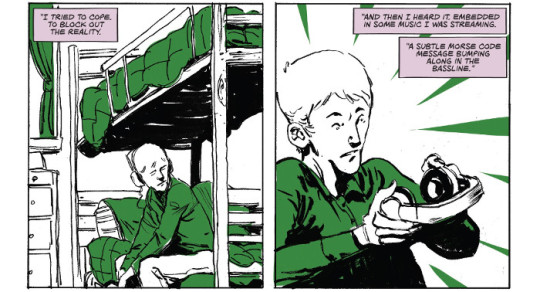
Bloodborne #7 continues to question the realities and relationship of religion and science, even as the city’s fate becomes bleaker and the disease threatens more and more citizens. While I think I preferred the existential terror of the first arc more, this is still highly enjoyable.
| Published by Titan
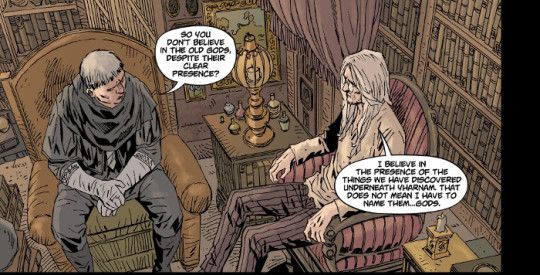
Cold Spots #4 delivers a little bit of explanation as to what Grace has been brought to the island to do. I say a little bit, since there’s still a lot left unanswered in this penultimate issue. Gorgeous artwork from Mark Torres. You can almost feel the coldness coming off the pages.
| Published by Image

Cover #3 is some amazing storytelling. Somehow Brian Michael Bendis, David Mack, Zu Orzu, and Carlos M. Mangual are layering more and more into the narrative with each subsequent issue in such a brilliant way that you barely notice how many disparate pieces are being presented. It’s like an intricate tapestry being woven before us. This issue even has a special sequence illustrated by Bill Sienkiewicz of a fantasy story I desperately want to read the rest of.
| Published by DC Comics / Jinxworld
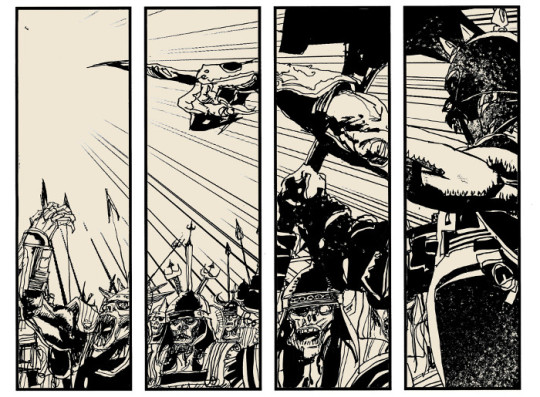
Crimson Lotus #1 begins a new series from John Arcudi, Mindy Lee, Michelle Madsen, and Clem Robins giving an origin story to Yumiko Daimio, one of Lobster Johnson’s enemies and grandmother to the BPRD’s favourite jaguar. It’s good, and an appearance early on from Rasputin just further shows some of the intricacies of the Hellboy universe.
| Published by Dark Horse
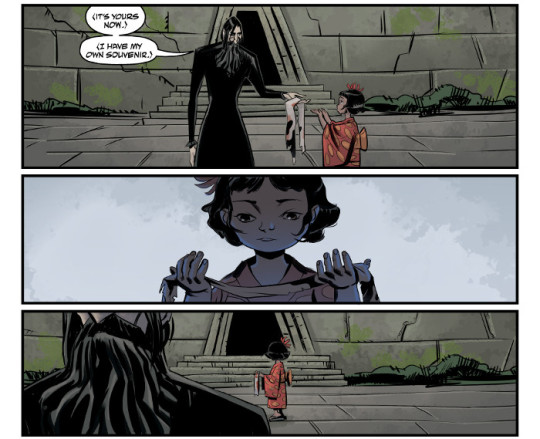
Devil Within #2 keeps the creepy factor up as Samantha and Michelle try to get help for Michelle’s possible possession. Excellent moody atmosphere provided by the art from Maan House and Dee Cunniffe.
| Published by Black Mask
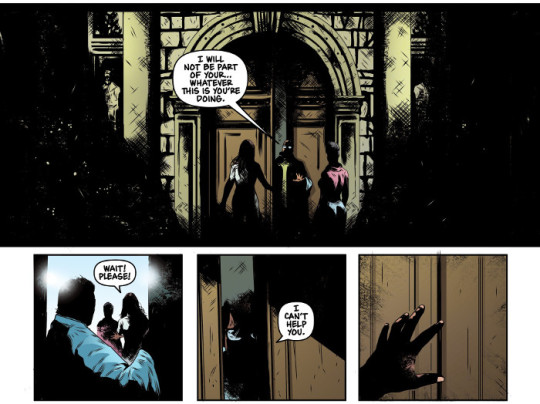
Doctor Strange #8 begins “The Price” but it’s really just a continuation of the “Two Doctors” arc, building off the corruption of Strange’s former student. Mark Waid gives us some very interesting developments here regarding who is targeting him, along with Kamma finding out something Stephen wishes she wouldn’t, and the revelation of the location of one of the other gems from Cyttorak that were revealed to exist in X-Men Black.
| Published by Marvel
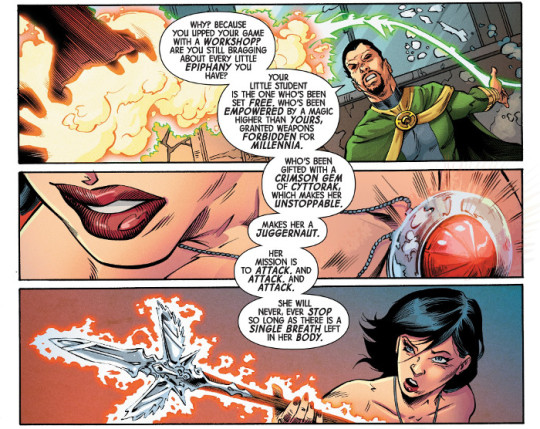
Evolution #12 ends the second arc with some lies, half-truths, and compelling confessions. The theme of change and mutation that has been evident since the first issue really comes to the fore this issue as some huge changes occur for the cast.
| Published by Image / Skybound
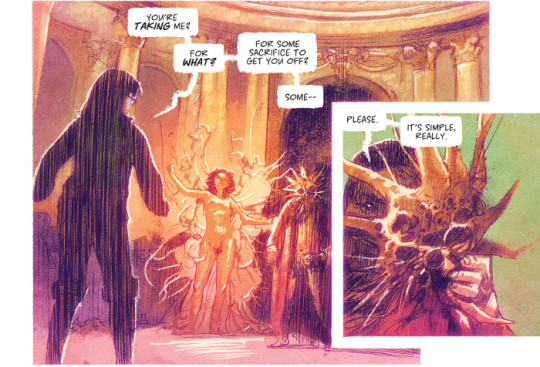
Exorsisters #2 gives more background to how the sisters came about through a deal with infernal powers by their mother. The art from Gisèle Lagacé and Pete Pantazis really is a huge draw.
| Published by Image
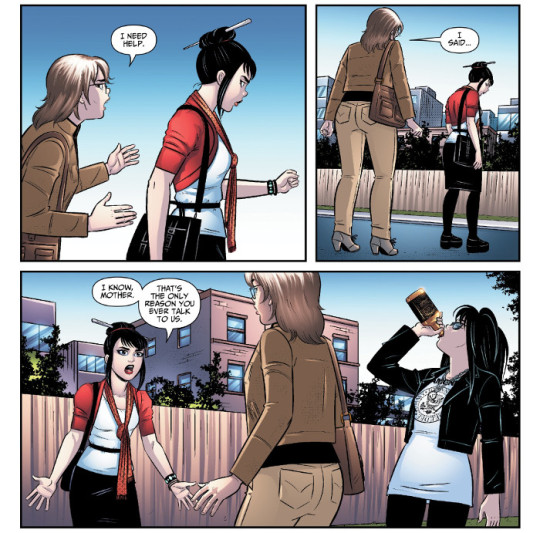
High Heaven #3 spends some time with Heather as she deals, kind of, with the loss of both David and Ben. Very weird things continue to go on in heaven with the usual great art from Greg Scott and Andy Troy. The Hashtag: Danger back-up remains funny with the lengths that the team goes to in order to save one of their own, only to have her kill herself again. And the prose pieces nicely round out the entire package.
| Published by Ahoy
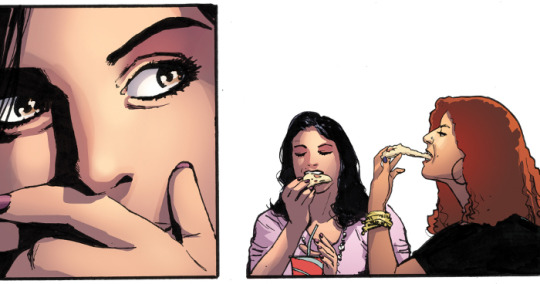
Hot Lunch Special #4 delivers the penultimate chapter to not just one of the best crime stories I’ve read in years, but also just one of the best stories I’ve read in years period. Eliot Rahal, Jorge Fornés, and Taylor Esposito have really got something special here, with intriguing characters, an ever twisting plot, and some incredible visual. The layouts for this issue, breaking down the pacing, are just wonderful.
| Published by AfterShock
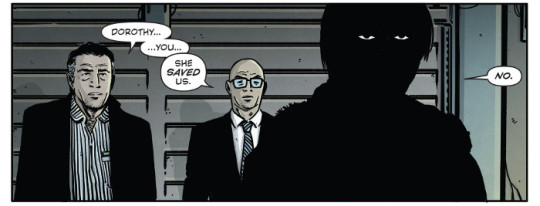
Immortal Hulk #9 is another staggeringly good issue, with a change for the Absorbing Man as he’s tapped to go up against the Hulk. While I am a little sad he didn’t stay legitimate following his redemption arc in Black Bolt, his development here from Al Ewing is pretty intriguing. Also love the art as the regular team of Joe Bennett, Ruy José, and Paul Mounts trade off pages with guest artist Martin Simmonds. The former illustrating the Hulk and the latter Creel before alternating in the battle between the two.
| Published by Marvel

Infinity 8 #7 begins the third loop “The Gospel According to Emma” from Lewis Trondheim, Fabien Vehlmann, and Olivier Balez. This reboot of the timeline starts off incredibly wrong as the Marshal approached to assist this time turns on the crew and effectively strands them in this timeline. There’s some interesting bits of grave robbers stealing treasure and overtones of the Marshal’s religion.
| Published by Lion Forge / Magnetic Collection
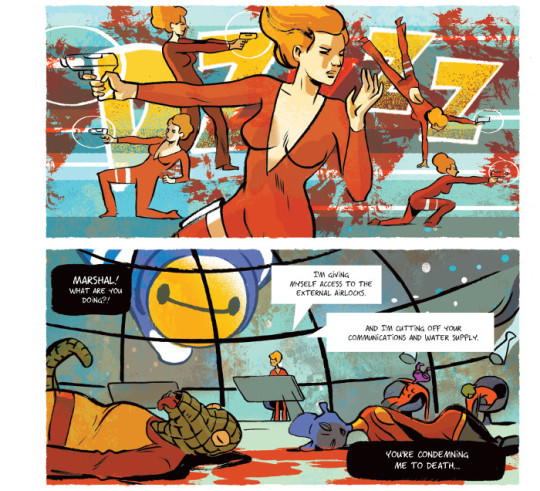
Infinity Wars: Ghost Panther #1 begins the final of these two-issue “Infinity Warps” mash-ups. Like the rest, it is incredibly well done. Jed MacKay, Jefte Palo, Jim Campbell, and Joe Sabino craft a tale merging Ghost Rider and Black Panther, seamlessly blending the two into something magical. The art from Palo and Campbell may well be the best of any of these minis and the art on all of them has been very impressive. Love the design for Zarathos.
| Published by Marvel
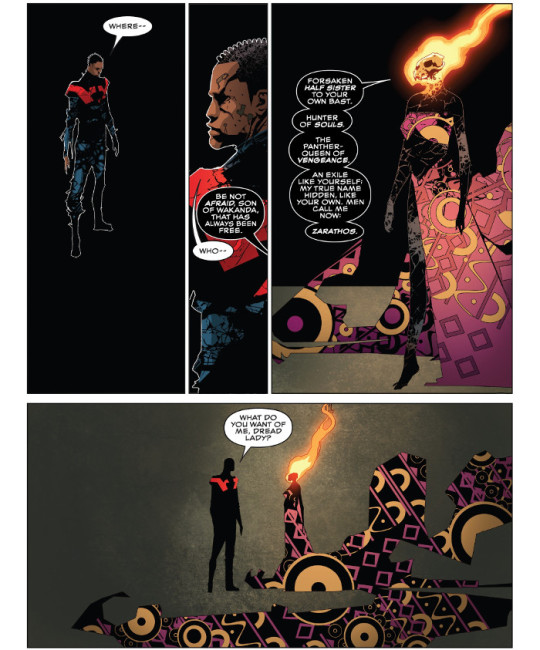
Judge Dredd: Toxic #2 has the violence and toxicity spillover as the explosion at one of the waste facilities causes increased fear and tension amongst the scrubbers hired to keep Mega-City One functioning. Paul Jenkins is crafting a tale full of the problems that come with xenophobia and the art from Marco Castiello, Vincenzo Acunzo, and Jason Millet just makes it visceral.
| Published by IDW
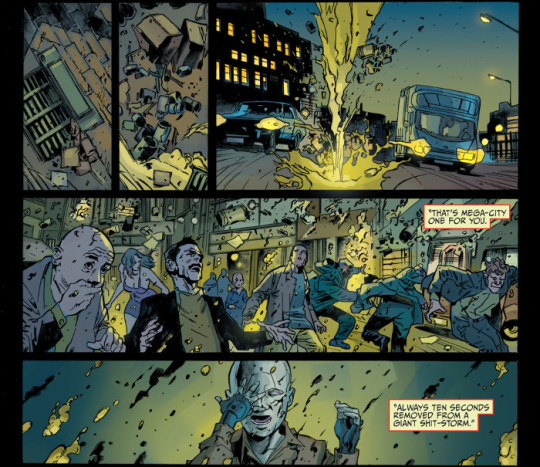
Justice League #12 has some really nice art from Frazer Irving for this penultimate chapter of the “Drowned Earth” event. Also, a very interesting revelation from Poseidon when it comes to the invading sea gods.
| Published by DC Comics
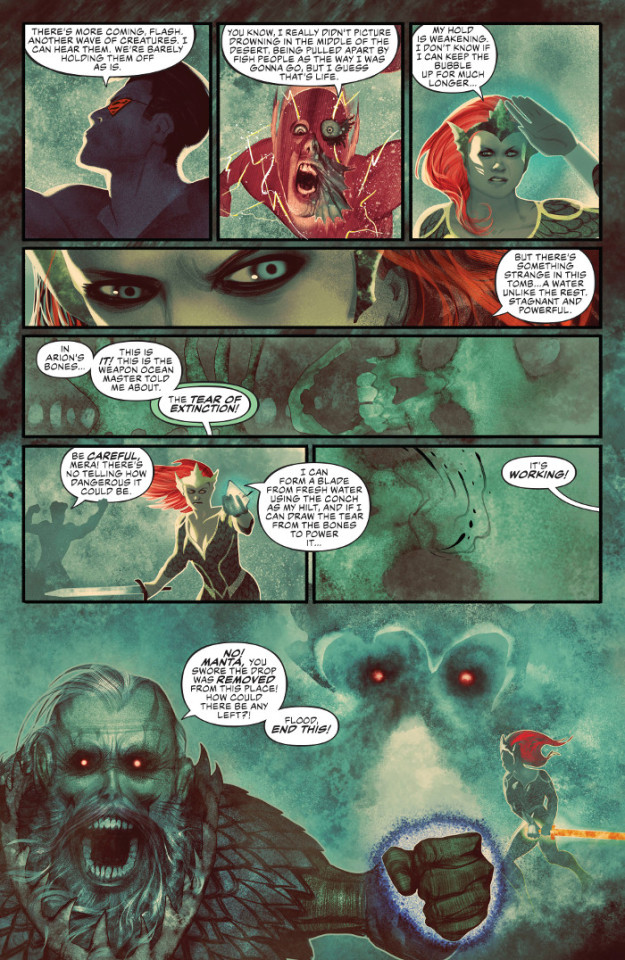
Justice League Dark #5 kicks off a new arc dealing with the ramifications of the first one, “The Witching Hour” crossover, and previous unrevealed tales of what happened with Detective Chimp after inheriting the Oblivion Bar. James Tynion IV gives some nice nods to the original Shadowpact series aided by beautiful art from Daniel Sampere, Juan Albarran, and Adriano Lucas.
| Published by DC Comics

The Last Space Race #2 introduces us to another member of the team, giving us a bit of his backstory, and largely making us want to drop him into a deep dark hole and forget that he’s there. Peter Calloway does a wonderful job of making Roger Freeman thoroughly unlikable, it’s kind of astonishing.
| Published by AfterShock
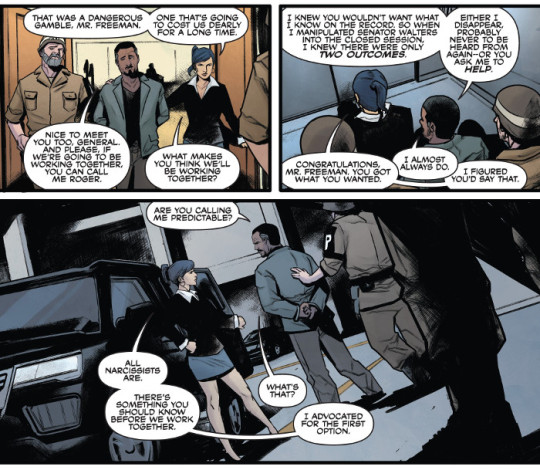
Lightstep #1 is a very different kind of sci-fi tale, mixing almost the feel of the decadence of Rome under Nero or Caligula and the high concept science fiction of a society that measures the class of its citizens by genetic similarity to their progenitor, and thereby assigns how “fast” they live. As I say, different from Miloš Slavković, Mirko Topalski, and Andrej Bunjac. Slavković’s art reminds me a bit Pasqual Ferry mixed with John Watkiss. The story itself somewhat reminds me of Watkiss’ work on John Jakes’ Mulkon Empire. On top of that, it’s part of a broader video game/media franchise from Eipix Entertainment, of which this looks like only the first volley (a novel and video game are forthcoming).
| Published by Dark Horse
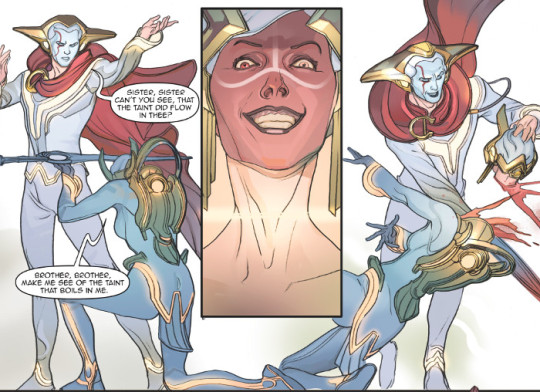
The Lollipop Kids #2 continues to be a fantastic and fabulous comic from Adam & Aidan Glass, Diego Yapur, DC Alonso, and Sal Cipriano. The art alone from Yapur and Alonso would be worth the price of admission, but the characters, setting, and overall plot just elevate this beyond a typical kids fantasy type deal.
| Published by AfterShock

Low Road West #3 gets significantly stranger and much more surreal as reality seems to be growing thinner. We’re still not any closer to really understanding what’s truly going on, but it doesn’t really matter. Phillip Kennedy Johnson, Flaviano, Miquel Muerto, and Jim Campbell are telling one hell of a compelling story.
| Published by BOOM! Studios
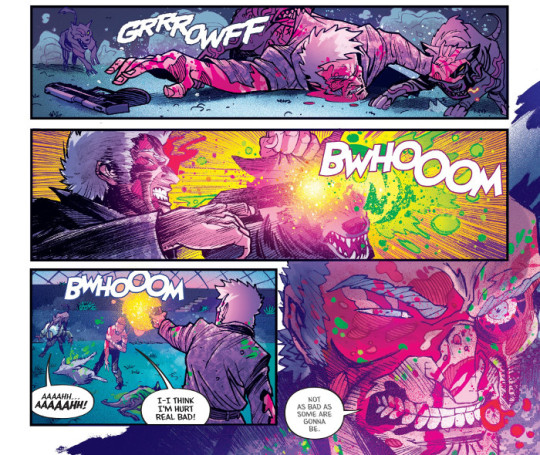
Mae #10 has Mae deal with some stuff in our world before stocking up and returning back to Cimrterén to resume her search for her father. Gorgeous artwork as always from Gene Ha and Wes Hartman.
| Published by Lion Forge / Roar

Marvel Knights #2 sees Matthew Rosenberg and Nico Henrichon join Donny Cates for this chapter, giving a bit of back story on how Banner roped in Castle into searching out the various heroes and leads to a confrontation with Elektra. Still no closer to understanding what happened here, but it does get weirder with a hallucinatory Karen Page. Henrichon’s art is just perfect for telling this story.
| Published by Marvel

Middlewest #1 is a magical debut of this new series from Skottie Young, Jorge Corona, Jean-Francois Beaulieu, and Nate Piekos. It’s a fantasy grounded in the reality of growing up hard in Middle America, with Abel dealing with an abusive father, while just trying to be a kid. But there’s a talking fox and devastating sentient storms. Rather inventive stuff all around. I’m also getting the impression that Jorge Corona should really be a household name. Between No. 1 with a Bullet, Old Man Jack, and now this, he’s been killing it recently.
| Published by Image
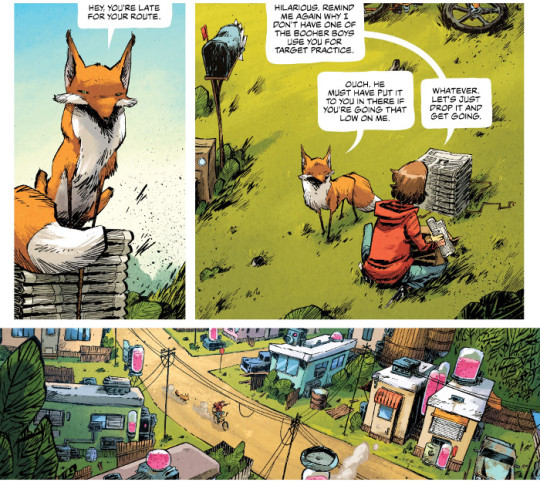
Night Moves #1 is a pretty great debut from VJ Boyd, Jordan Boyd, Clay McCormack, Mike Spicer, and Shawn DePasquale. It’s a gritty crime drama with occult overtones, but most of the weirdness is just simmering under the surface so far as the protagonists work to find out what kind of mess they’re in. McCormack and Spicer’s art really capture the feel of the seediness of the story well.
| Published by IDW

Optimus Prime #25 brings it all to a close, with a flashback through Optimus’ life and little vignettes of the various Transformers from John Barber, Kei Zama, Josh Burcham, and Tom B. Long. I’m really going to miss this world.
| Published by IDW

Pearl #4 is probably the most stereotypical Bendis issue to date, but the dialogue doesn’t tip over into the ridiculous territory. Most of this issue is a conversation between Pearl and tattoo boy, but at least it’s interesting conversation and not random pop culture references repeated as questions.
| Published by DC Comics / Jinxworld

Pestilence: A Story of Satan #5 gives a bittersweet end to this story, filled with loss and sacrifice. It’s kind of fitting considering how bleak both this and the first series have been. Wonderful art from Oleg Okunev, Guy Major, Michael Garland, and Marko Lesko.
| Published by AfterShock

The Punisher #4 may well be one of the bloodiest, most violent mainline 616 Marvel Universe Punisher issues yet as Jigsaw and an assortment of Hydra goons attempt to kidnap Frank from prison. Matthew Rosenberg and Szymon Kudranski are continuing to keep this book moving at a breakneck pace, like an action movie that barely takes any moments to breathe.
| Published by Marvel
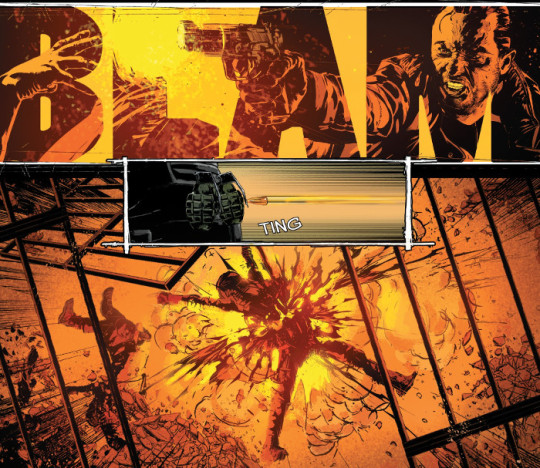
Quantum & Woody! #12 brings this volume to a close, with an interesting character study of the brothers at the hands of GATE and X-O Manowar.
| Published by Valiant
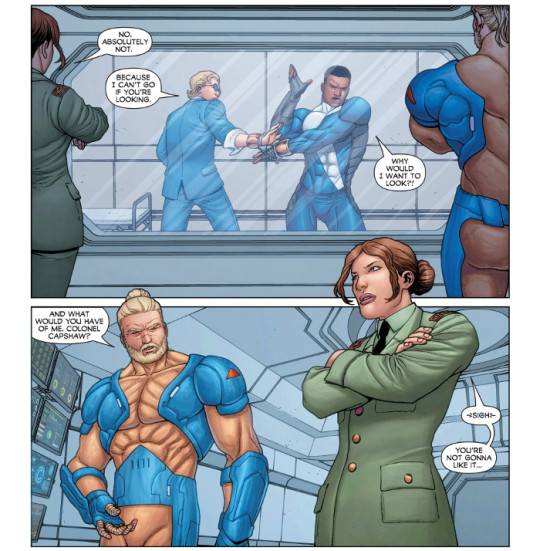
Rumble #9 brings “Things Remote” to an end with an epic battle between the Esu and Rathraq’s friends, leading to an interesting realization for Rathraq and what he wants out of life. Stunningly beautiful art from David Rubín and Dave Stewart.
| Published by Image
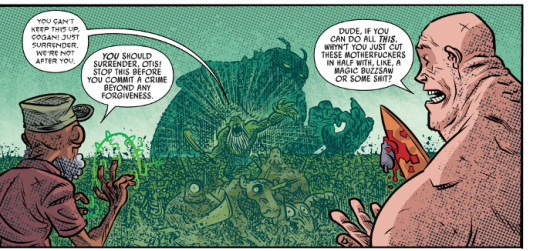
Shadowman #9 continues the “Rag and Bone” arc as Alyssa and Jack confront Sandria Darque. Gorgeous artwork from Renato Guedes, Eric Battle, and Ulises Arreola.
| Published by Valiant
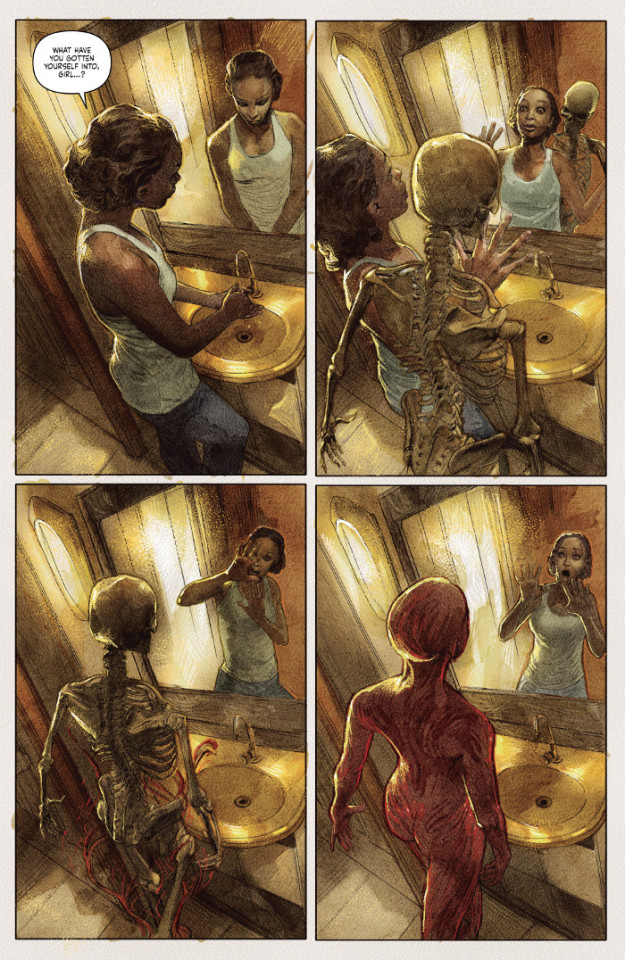
Shuri #2 continues the search for Black Panther, while back on Earth the women of Wakanda form a council to figure out how to maintain and administer the nation while he’s missing. Definitely some interesting concepts and character points from Nnedi Okorafor. Phenomenal artwork and layouts from Leonardo Romero and Jordie Bellaire.
| Published by Marvel

Spider-Force #2 is probably one of the bleakest, mean-spirited stories I’ve read in a while. This isn’t a bad thing, but the story’s a bit of a downer as the nature of an irradiated world without hope seems to permeate everything, including characters like Jessica Drew who are normally at least a bit more level-headed. Priest is writing a very dark story, with some complicated characters like Peter’s granddaughter who grew up in the Old Man Logan universe and a Peter Parker who looks like he was abused by Uncle Ben.
| Published by Marvel
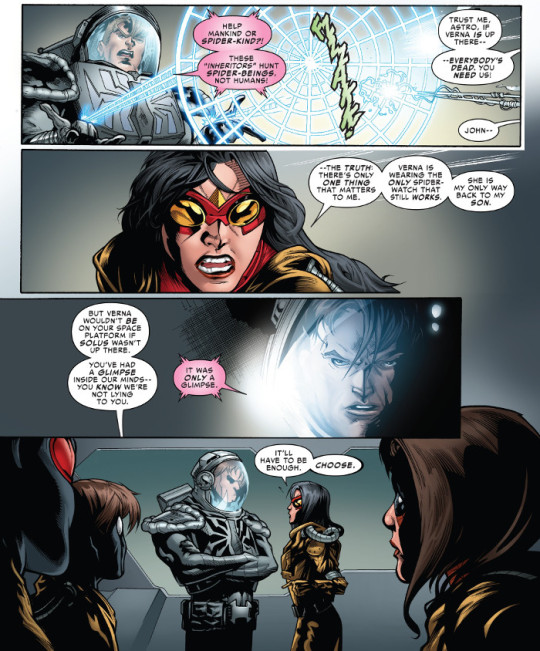
Spider-Geddon #4 kind of spoils the need to read Spider-Force #3 out in three weeks, which just kind of adds to the downer feel of that series. This issue turns darker itself with a bevy of betrayals. Christos Gage has kind of stacked the deck against the spiders, I wonder how they’re going to get out of it in the finale.
| Published by Marvel
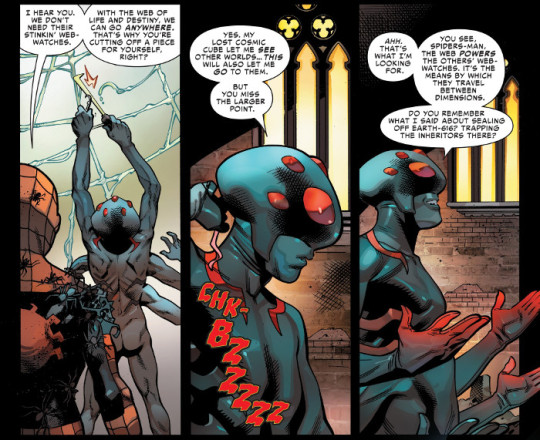
Stellar #6 concludes the series and it is incredibly messed up. The conflict between Zenith and Stellar is bizarre and perverse, but I don’t really want to go into it more because spoilers would ruin its impact. Joe Keatinge, Bret Blevins, and Rus Wooton have done an amazing job with this series. Highly recommended.
| Published by Image / Skybound

Sukeban Turbo #1 is another series originally published by Glénat Editions in France, translated into English for North American markets. It’s a mix of teenage rebellion, crime, and following a boy band from Sylvain Runberg, Victor Santos, and Shawn Lee. The art from Santos is worth it on its own, very impressive layouts and storytelling.
| Published by IDW
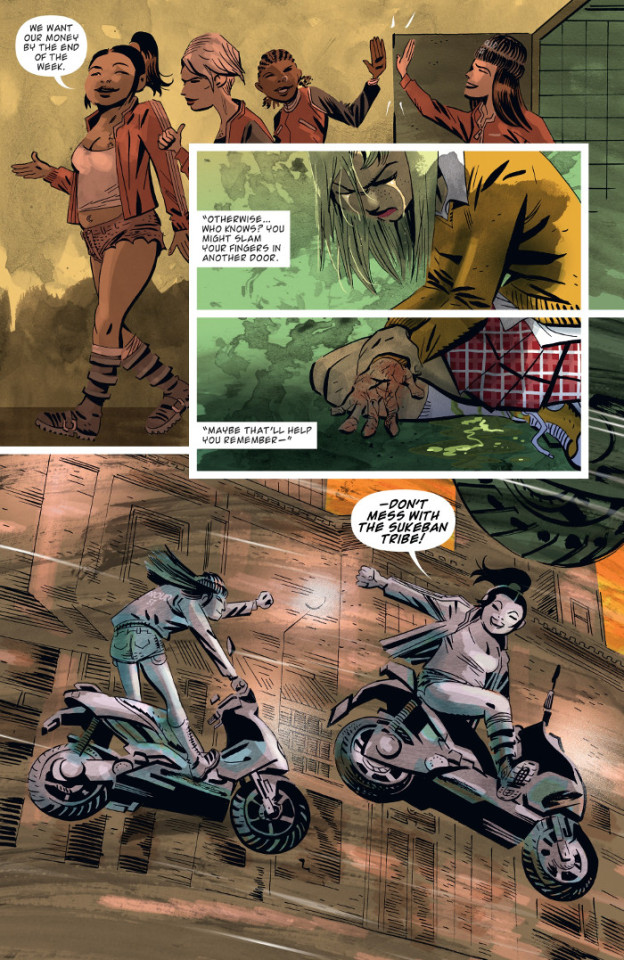
Summit #10 kicks off the third arc for the series and like most of the Catalyst Prime series recently it undergoes a bit of a change in status quo. Val finds out that she hasn’t been hallucinating, but hearing the voice of another of her team that was essentially vaporized during the event, before having her life turned upside down as the government starts hunting her. Amy Chu continues writing the series, while she’s joined by Marika Cresta fully for the art here.
| Published by Lion Forge / Catalyst Prime
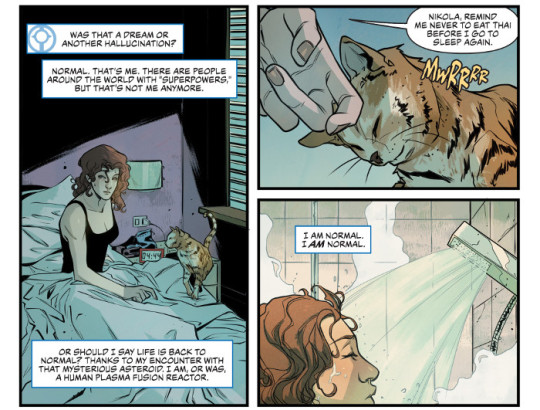
Tony Stark: Iron Man #6 begins “Stark Realities” and the launch of Tony’s eScape virtual reality game. Dan Slott, with a script assist from Jeremy Whitley, does a great job of making it feel chaotic at launch, with some ordinary and extraordinary problems occurring. The pissed off griefer is hilarious.
| Published by Marvel
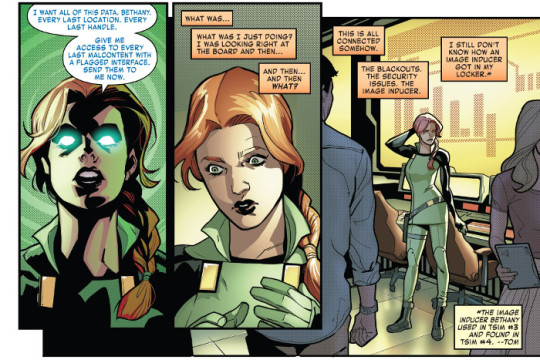
Web of Venom: Carnage Born #1 is an interesting reinterpretation of Carnage’s origin to fit within the new mythology being crafted in the current Venom series, also building off the recent two-part arc there with the Maker, from Donny Cates, Danilo S. Beyruth, Cris Peter, and Clayton Cowles. This is more very entertaining outgrowth of the Marvel Universe from Cates and gives us a quite possibly deadlier Carnage.
| Published by Marvel

West Coast Avengers #4 concludes the first arc in fairly straightforward fashion as the team deals with BRODOK and the women transformed into giant monsters. Some nice little character moments from Kelly Thompson and great art from Stefano Caselli and Tríona Farrell.
| Published by Marvel
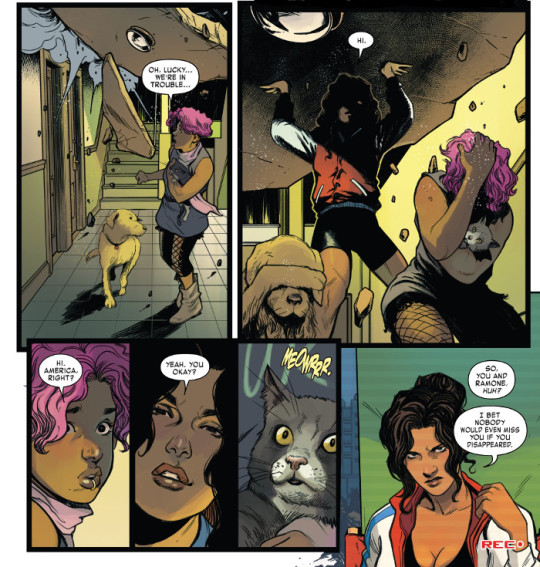
The Whispering Dark #2 continues its existential and moral crisis as the squad commits war crimes as they struggle to survive. There’s something off about how everything is happening, in how Christofer Emgård is writing the narration, but I’m not sure if it’s just the in-story reason of the go-pills. It feels like the squad is already in Hell and being judged.
| Published by Dark Horse

Other Highlights: American Carnage #1, Archie #700, Black AF: Widows & Orphans #4, Black Hammer: Age of Doom #7, Burnouts #3, Days of Hate #10, Dejah Thoris #10, Dick Tracy: Dead or Alive #2, East of West #40, Encounter #8, GI Joe: A Real American Hero - Silent Option #2, Go-Bots #1, Jughead: The Hunger #10, The Long Con #5, Love & Rockets #6, Lucifer #2, Lumberjanes #56, Mars Attacks #2, The New World #5, Olivia Twist #3, Project Superpowers #4, Rick & Morty Presents Pickle Rick #1, Smooth Criminals #1, Star Wars #57, Star Wars: Solo #2, TMNT: Urban Legends #7, Underwinter: Queen of Spirits, Xena: Warrior Princess #10
Recommended Collections: 24 Panels, Accell - Volume 3: Turf Battles, Amazing Spider-Man: Renew Your Vows - Volume 4: Are You Okay, Annie?, Crude - Volume 1, Dark Souls Omnibus, Delta 13, Dungeons & Dragons: Evil at Baldur’s Gate, Flavor, Immortal Hulk - Volume 1: Or is he Both?, Justice League - Volume 1: The Totality, Peter Parker: The Spectacular Spider-Man - Volume 4: Coming Home, Resident Alien - Volume 5: An Alien in New York, Spidey: School’s Out, Stray Bullets: Sunshine & Roses - Volume 3, Unnatural - Volume 1: Awakening, Venom - Volume 1: Rex, The X-Files: Case Files - Volume 1

d. emerson eddy wonders if there’s going to be any light in our real darkest hour.
4 notes
·
View notes
Text
Film Review - Soul
My apologies to anyone following me that I’ve not been posting much in the past couple of weeks. In addition to finalising preparation for writing the third novel in the trilogy I’ve been working on, I’ve recently returned to having occasional days in the office for my day job, and having to transport my IT equipment to and from the bus on those days isn’t something I’ve acclimatised to yet. However, I’m now up to film three in the quartet of films I was aiming to watch and review before starting on the Batman animated series. So, without further ado, here is my look at Disney and Pixar’s Soul…
Plot (as adapted from Wikipedia):
Joe Gardner, a pianist and middle school music teacher living in New York City, dreams of playing jazz professionally. When he receives an offer for a full-time teaching position, his mother Libba urges him to accept it, fearing for his financial security. One day, Joe learns of an opening in the quartet of jazz legend Dorothea Williams and auditions at a music club. Impressed with Joe's piano playing, Dorothea hires him for that night's show. As Joe heads off, his excitement distracts him, and he falls down a manhole.
Joe finds himself as a soul heading into the "Great Beyond". Unwilling to die, he tries to escape but ends up in the "Great Before", where counsellors (all named Jerry) prepare unborn souls for life with the help of mentor souls. Each soul has a badge which grants passage to Earth once it is completely filled out with personality traits. Mistaken for a mentor, Joe is assigned to train 22, a cynical soul who has always lived in the Great Before and wants to avoid having to go to Earth. Discovering that Joe is in a coma at a hospital, 22 agrees to let him help find her "spark" to complete her badge and then give it to him so that he can return home. After Joe fails to find 22 a passion, they visit "the zone", a place that souls can enter when their passions create a euphoric trance, but which can also become a trap for obsessed lost souls. They come across Moonwind, the captain of a galleon bearing a troupe of hippie mystics, who help Joe locate his body on Earth.
Joe returns to Earth but accidentally carries 22, resulting in the two souls respectively entering the bodies of a therapy cat and Joe himself. They find Moonwind (at his day-job as a sign twirler), who agrees to meet them later at the jazz club to restore Joe to his body. In the meantime, 22 settles into Joe's body and enjoys small moments while interacting with Joe's peers. She holds poignant conversations with Connie, a student who wants to quit the school band but changes her mind after performing a trombone solo; Dez, who wanted to become a veterinarian but now enjoys being a barber; and Libba, who finally accepts Joe's passion for music. Meanwhile, Terry, an obsessive accountant who tallies souls headed to the Great Beyond, discovers that Joe is missing and heads to Earth in order to send him to the Great Beyond and restore the count.
As the day ends, Joe and 22 rendezvous with Moonwind to return Joe to his body. However, after Joe tells 22 that her experiences were not purposes, 22 refuses and flees to find her spark, with Joe tailing behind. As they run through a subway station, Terry traps them both and brings them back to the Great Before. 22 realizes her badge is filled out, yet Joe insists it was because of his traits, and that she has not truly found her spark. Angry, 22 tosses the badge at him and disappears into the zone. A Jerry informs Joe that a spark is not a soul's purpose in life, but Joe refuses to believe this and uses 22's badge to return to Earth.
The night's show is a success, but Joe is not as satisfied as he imagined he would be and realizes that his life has not significantly changed even after fulfilling his dream. Looking at objects that 22 collected while in his body, and recalling the moments they had enjoyed together, he sees that these experiences have given 22 her spark. By playing piano, he enters the zone with the intent to return her badge but discovers that she has become a lost soul. He chases her down and shows her a maple seed she had collected to remind her of the time she spent on Earth, having realized that a spark is not a soul's purpose, but merely an indication that it is ready to live. Joe's actions restore 22 to normal, and he returns her badge and escorts her out of the Great Before for her journey to Earth.
As Joe prepares to enter the Great Beyond, a Jerry stops him and offers another chance at life in gratitude for finally inspiring 22 to live. Joe returns to his body on Earth and starts the next day committed to enjoying the rest of his life.
Review:
When it comes to Disney and Pixar films, I’m not someone who goes in for everything that comes out of the collaboration of these studios, just like I don’t go for every Disney animated classic, etc. More often than not when dealing with these films, especially now that I’m a grown man, the film has to offer up something in its very premise that makes me think “ok, that’s actually going to be interesting enough to be worth my time.” A key example of this was several years ago when Disney and Pixar advertised Inside Out, and I was drawn in by the intriguing premise of a family-friendly exploration of a young mind. Soul seemed to be a logical next step in the same vein, but shifting the focus from something psychological to something spiritual, while at the same time avoiding religion.
Because of its very premise, Soul can be a tricky film to get into; there’s a lot of metaphysical, and quite frankly hypothetical, concepts that frame the scenes set in the soul realm, which is primarily split into a “great before” that is apparently the origin point for all unborn souls, and an access point to the “great beyond”. The latter is evidently kept ambiguous both to avoid coming down for or against any religions, and also to keep the focus more on the former. It’s one of many smart moves made by those behind the film; another is decision to establish a culture trust comprised of black employees and consultants so that the main character of Joe Gardner is an honest representation of black Americans and not some horrible stereotype. I can think of so many places outside the film industry and so many groups in addition to black people who could benefit from such trusts being established.
The story itself is certainly interesting as well, so the film isn’t just depending on this strange concept of a soul dimension to keep the audience hanging on, and the almost odd couple dynamic between the key characters of Joe and 22 (voiced by Jamie Foxx and Tina Fey, respectively) is a fun one to watch. The middle part of the film where our main characters wind up in the wrong bodies brings a few scenes I initially felt compelled to fast-forward, as at first viewing they felt like weirdness for its own sake. This is how I tend to regard any body-swaps played for comedic value, and it’s why you’ll never find me watching something like Vice Versa or Freaky Friday. However, having re-watched with the film commentary on, I now understand this is a necessary component in helping Joe, and to a lesser degree 22, to reassess their attitudes by altering their perspectives.
The film has a decent jazz score as its title and the main character of Joe requires, and among the other actors lending their voices to the film are Angela Bassett (T’Challa’s mother from the MCU film Black Panther) and British TV host Graham Norton. So, all in all, this film mostly sounds like it deserves its critical accolades, perhaps even more so considering that the film’s production had to be finished from home, as the Covid lockdowns hit Pixar when Soul had about seven weeks of production left. Surely, one would think I couldn’t find anything to fault after realising what the body-swapping was about, right?
Well, sadly, that isn’t quite the case. The film works towards a reveal in its third act regarding the nature of what a soul’s “spark” is, but the way the scenes in the great before set out how these sparks are found contradicts what they supposedly turn out to be. While that’s probably meant to be misdirection, it comes across as contradiction to me. The reveal is that sparks are just indicators of a soul’s readiness to live, but if that is so, why are new souls taken to the “hall of everything”, which is set up with examples of specific pursuits, or allowed to look what a mentor soul has done in their life? Everything in the build-up suggests a spark is a soul’s passion in life, not a readiness for life. If it’s all about readiness for life, why wasn’t anything that inspired 22 to live available in the soul realm? For me, this is the one part of the film where I think the reach of those who made the film exceeded their grasp.
Other than this single issue, Soul is still a very good film, and while not quite at the same level as Inside Out, it is still a worthy follow-up film of sorts. I give it 8 out of 10, and I think Disney and Pixar need to work on something like an Incredibles 3 or Inside Out 2 before they try to create more Soul films. Hopefully the time in between will allow them to better prevent future inconsistencies if Soul is indeed given any sequels.
0 notes